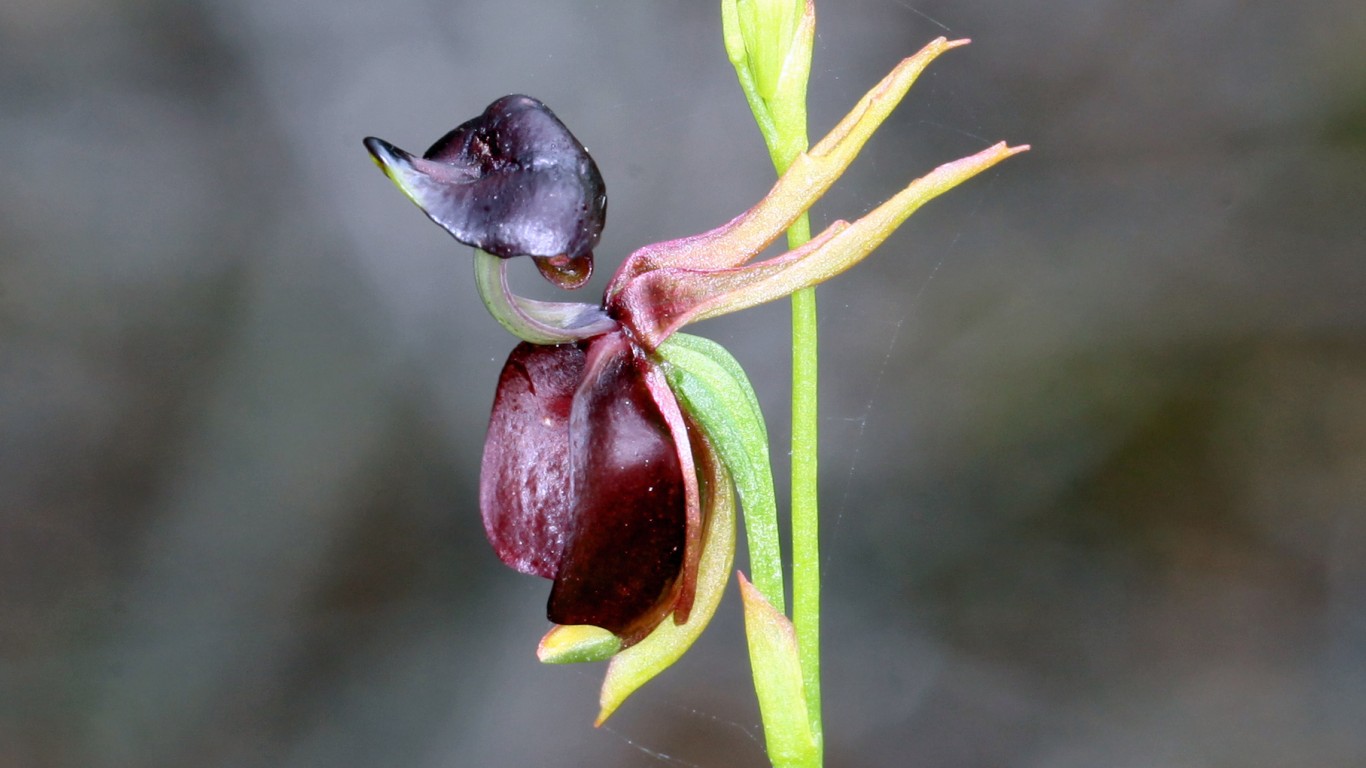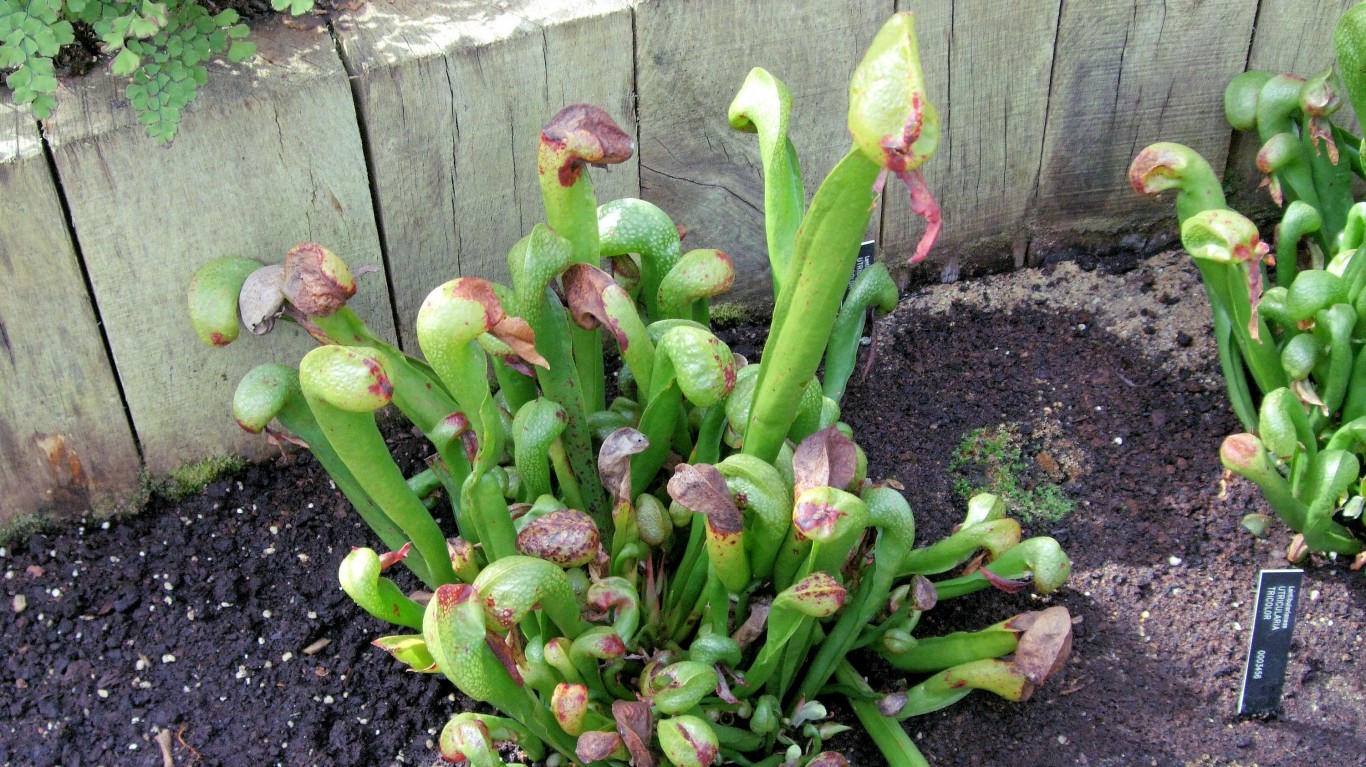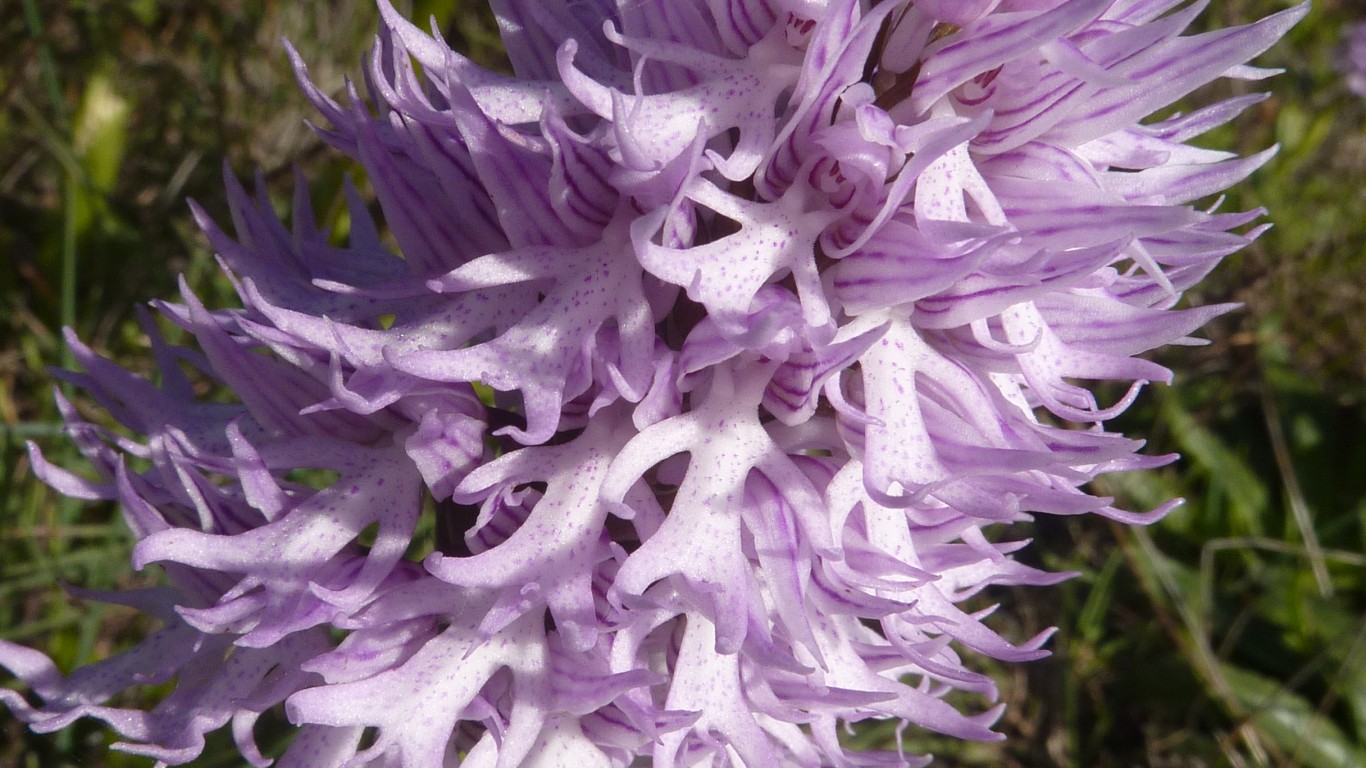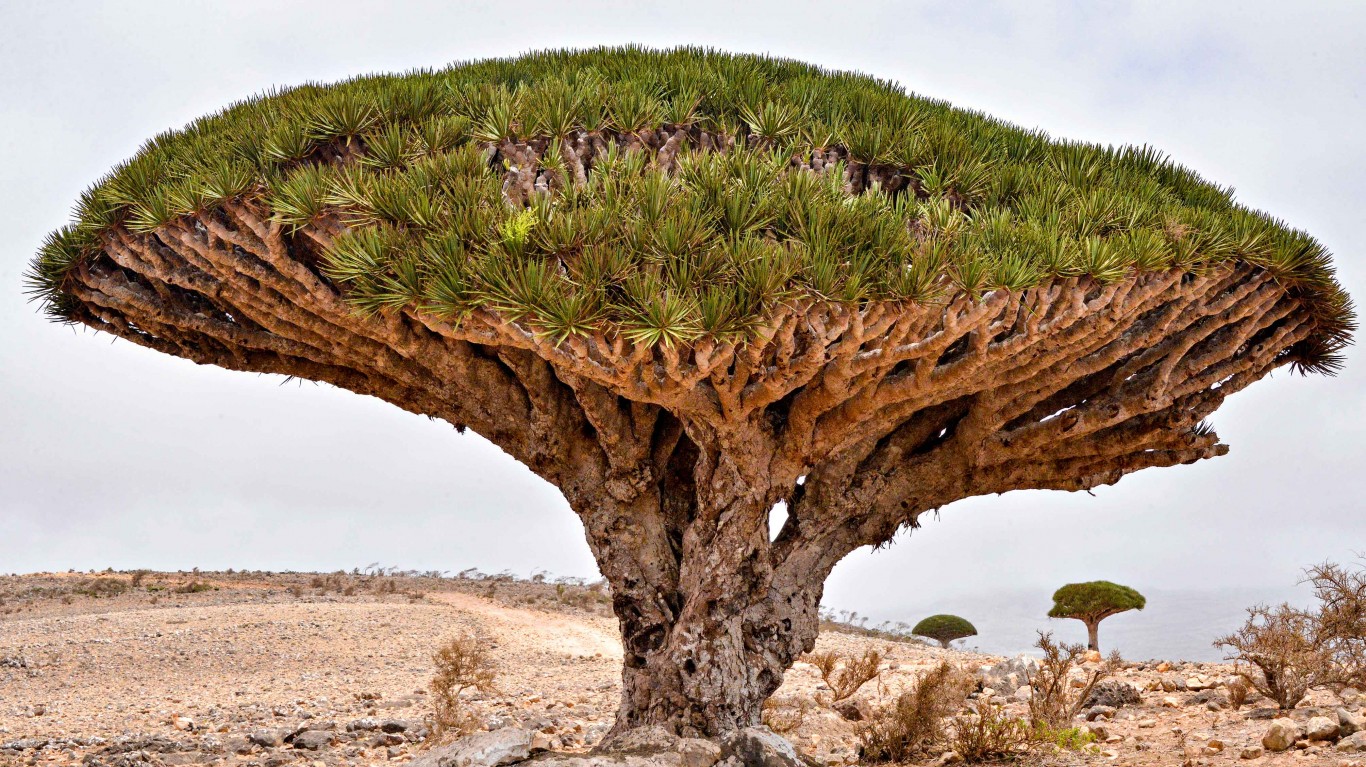
Plants play an enormous role in the world’s ecosystem, supporting life as we know it. They are nature’s ornaments, decorating our forests, deserts, and jungles in all shapes and sizes and all the colors of the spectrum. Some plants combine colors and shapes that are breathtakingly beautiful. Others seem to have sprung from the minds of science fiction writers and don’t seem to be of this Earth.
To identify the weirdest plants of all time, 24/7 Tempo consulted a variety of sources on what many consider to be the strangest, most unusual members of the plant kingdom. We concentrated on plant species with characteristics that seem to defy common perceptions — ranging from carnivorous diets to unconventional means of pollinating to strange defense mechanisms to plants that simply look the strangest.
Click here to see the weirdest plants of all time.
Click here to read out methodology.
Some plants such as the cape sundew and the porcupine tomato are considered invasive species outside their native areas and propagate rapidly. These are the most devastating invasive species.
Not all of the plants on our list are still with us. Lepidodendrons, or scale trees, populated the Earth during the Carboniferous Period, from about 359 million to about 299 million years ago. They grew close together and reproduced by use of spores. They died out probably because of climate change. Here are the 50 oldest things in the world.
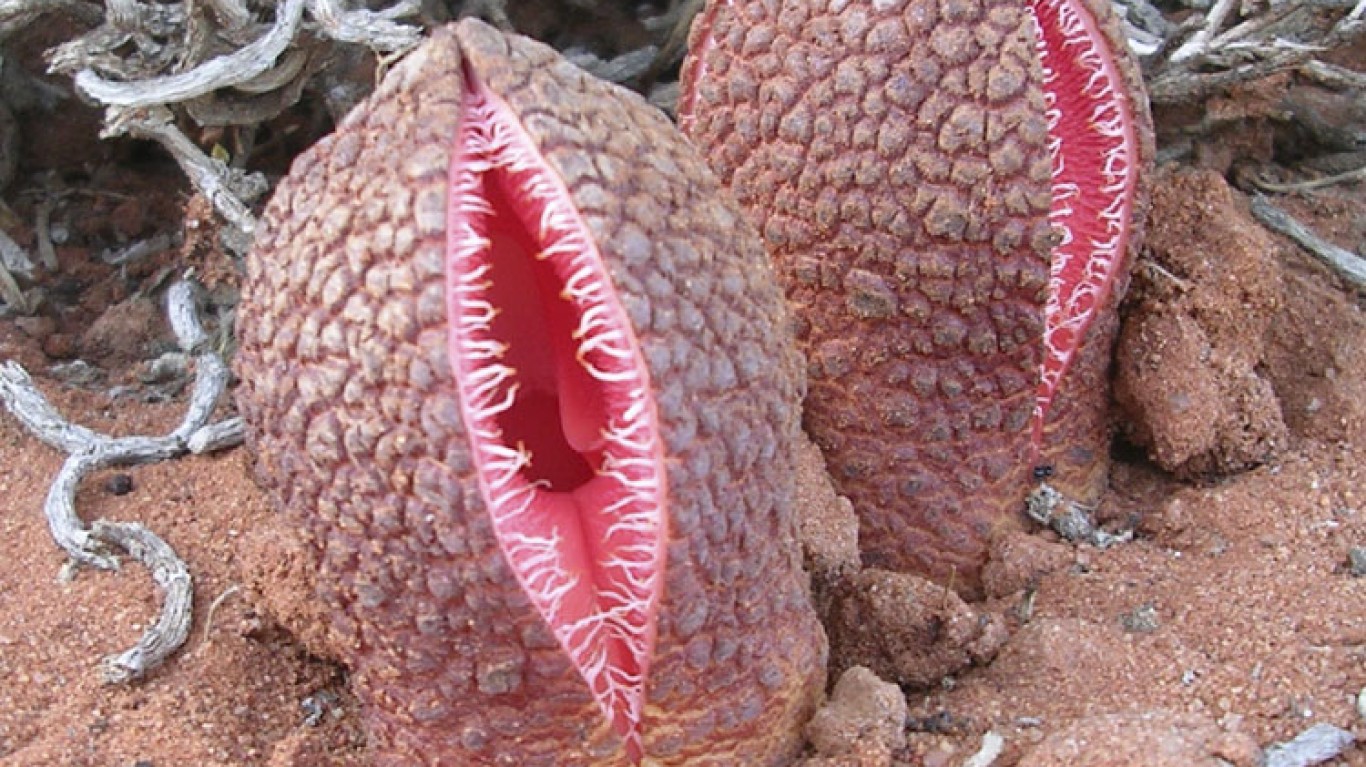
1. Hydnora
> Scientific name: Hydnora africana
> Main habitat: Southern Africa
The hydnora looks like a refugee from a sci-fi movie, except that it is found on Earth, specifically in southern Africa. It’s a parasite that latches on to the roots of other species and grows entirely underground except for the flower. The hydnora emits a smell similar to feces that attracts beetles, which the plant traps but does not kill. It holds the beetles until the flower is mature and then releases them.
[in-text-ad]
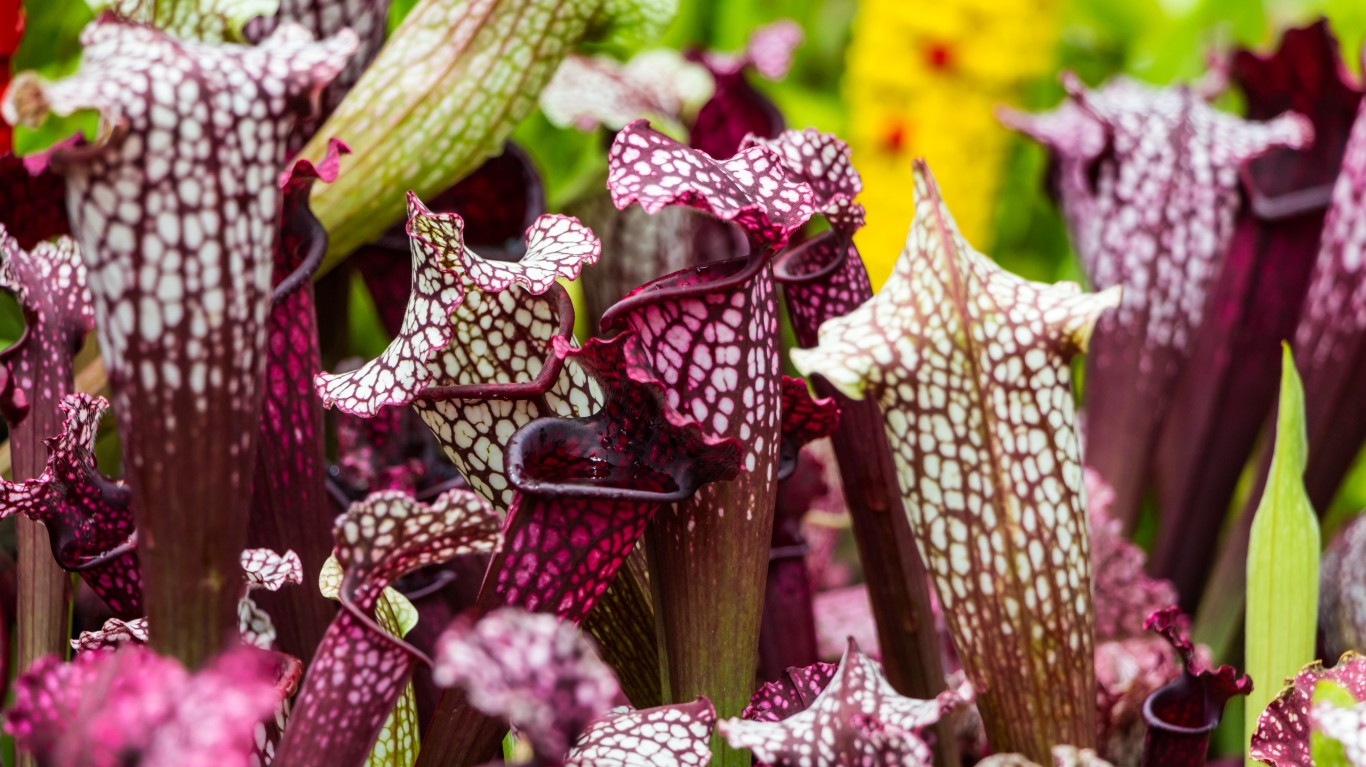
2. Purple pitcher plant
> Scientific name: Sarracenia purpurea
> Main habitat: Across Canada, Alaska, the Great Lakes and Gulf Coast regions of the U.S.
You don’t necessarily think of Canada as home to many carnivorous plants, yet there are 18 such species found in the Great White North, and the purple pitcher plant is one of them. Insects are trapped inside the plant after they slide down the plant’s slimy innards by small hairs tilted downward inside the plant. Once inside the plant, the creature drowns in water and is consumed by the plant.
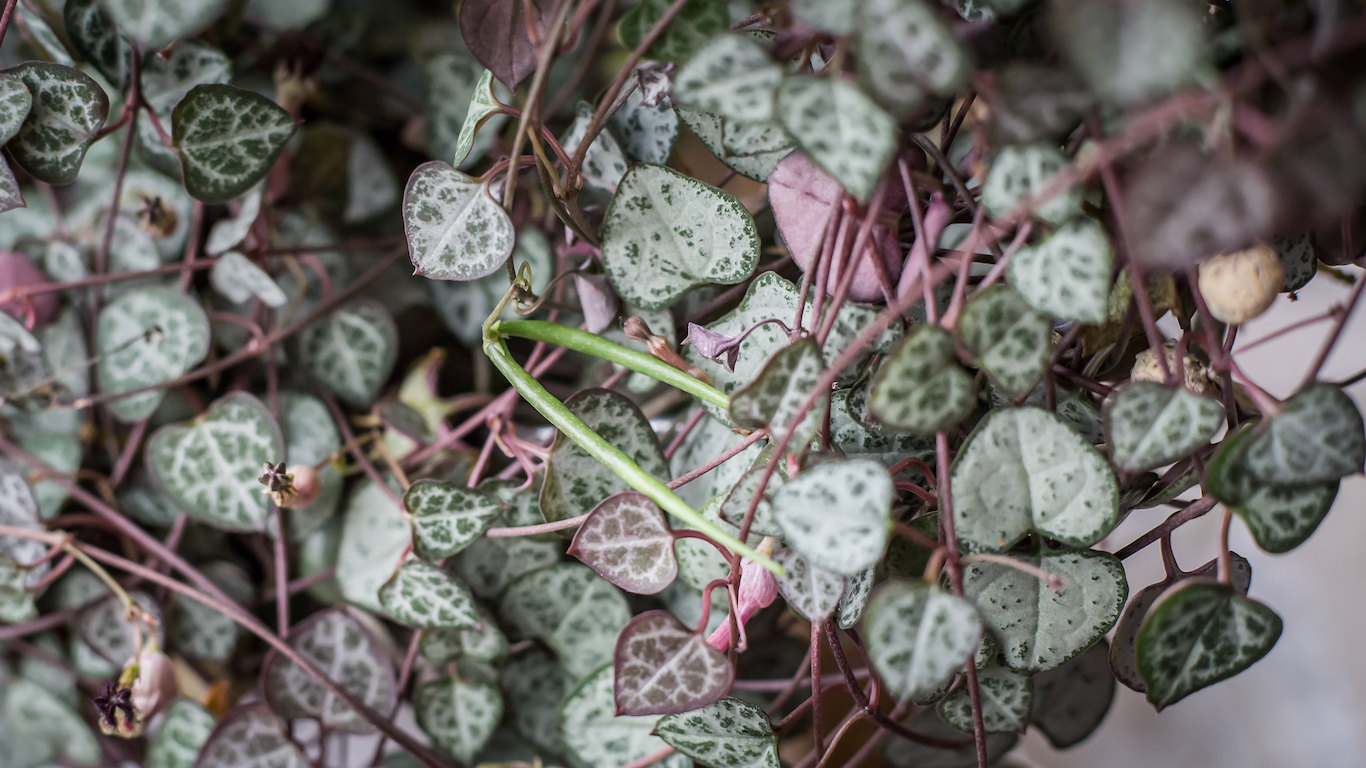
3. Parachute flower
> Scientific name: Ceropegia woodii
> Main habitat: Western Australia
The parachute flower, native to southern Africa, is one of nature’s fraudsters with a weird hair-flecked tongue-like feature in its center. The flower’s smell beckons insects inside. Once there, the insects are trapped but not eaten by the plant. They are kept inside until the hairs of the plant wither away. When the insects escape, they are cloaked with the flower’s pollen.
4. Hammer orchid
> Scientific name: Drakaea glyptodon
> Main habitat: Australia
The hammer orchid, also known as the King-in-his-Carriage, is an endangered orchid species that can be found in damp, sandy soil and swampy areas in western Australia. The plant produces pheromones — chemicals that alter the behavior of a creature of the same species — that draw male wasps who may mistake the orchid for a female wasp. The male tries to grasp the plant, which gets covered with pollen. The plant grows a heart-shaped leaf that features a pattern of pale and dark green.
[in-text-ad-2]
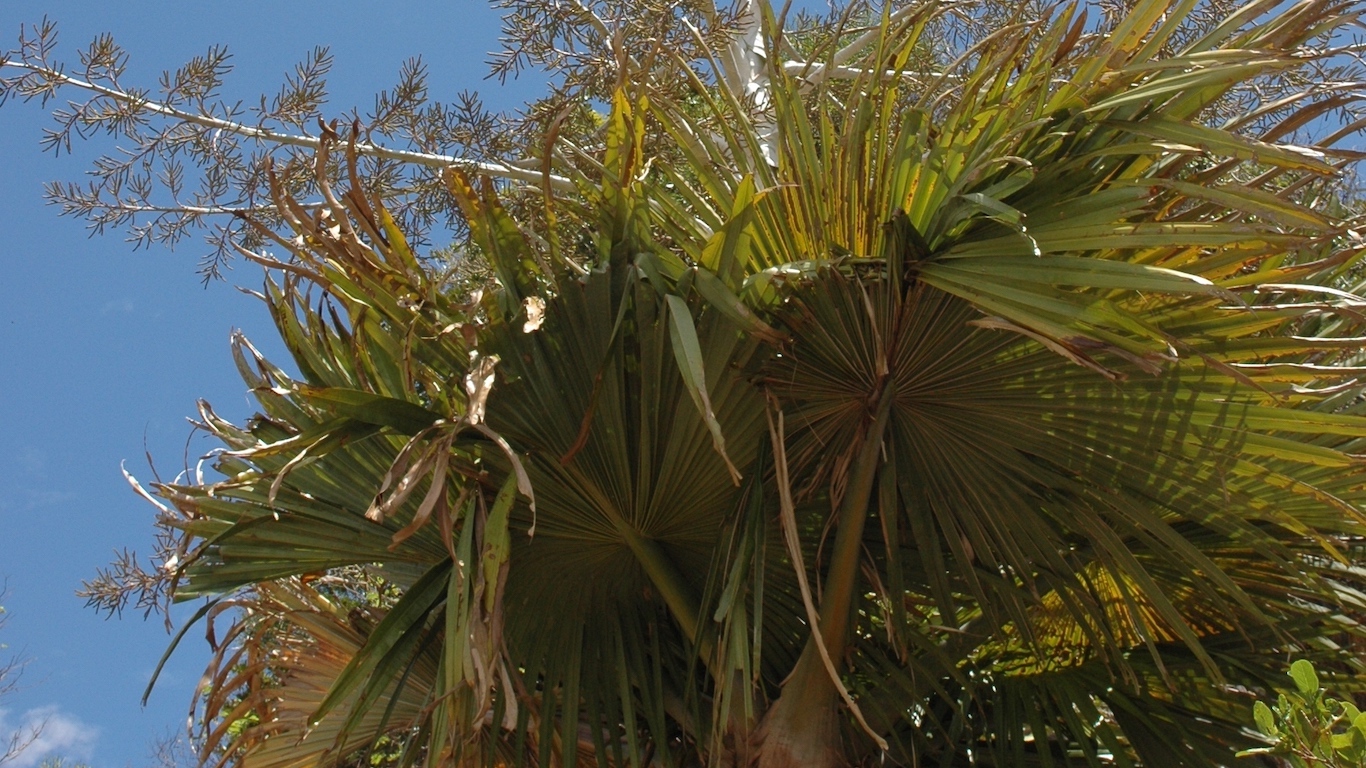
5. Suicide palm
> Scientific name: Tahina spectabilis
> Main habitat: Madagascar
One of the more recent plant discoveries is the suicide palm. It was found in 2005 in Madagascar by Xavier Metz, a Frenchman who manages a cashew plantation there. The tree grows to 60 feet in height, has leaves that span 16 feet, and lives for 50 years. Only 90 of the trees can be found in the wild. The plant gets its name from how it meets its demise. At the end of its life, the stem tips explode in a massive show of tiny flowers capable of being pollinated and developing into fruit. The nectar from the plant draws insects and birds. However, the colorful exposition exhausts the plant, draining its nutritional supply, and it dies.
6. Strangler fig
> Scientific name: Ficus (several tropical and subtropical species)
> Main habitat: Australia
The strangler fig, described by Science magazine as a “parasitic nightmare,” lives up to its name. The plant can be found in Australia and can grow upward and downward on its host. When the fig grows downward, it robs its host, usually a living tree, of its nutrients. When the fig grows upward, its leaves block sunlight from reaching the host. The strangler fig can outlive the host tree by years.
[in-text-ad]
7. Welwitschia mirabilis
> Scientific name: Welwitschia mirabilis
> Main habitat: Namib Desert
The Welwitschia mirabilis, found in the harsh Namib Desert, is made up of two large leaves that grow from a short, thick trunk. The plant can grow to about 2 feet tall. Some plants have been known to live as long as 2,000 years.
8. Sensitive plant
> Scientific name: Mimosa pudica
> Main habitat: South and Central America
The sensitive plant, found in South and Central America, has pink blossoms and fern-like leaves, and is a bit shy. If you touch it, the leaves fold up in a defensive reaction. That’s because when the plant is touched, the stems secrete chemicals that force water out from its cells, which collapses the leaves. Scientists believe this is an evolutionary trait designed to thwart predators.
9. Corpse flower
> Scientific name: Amorphophallus titanum
> Main habitat: Western Sumatra
There’s no false advertising when it comes to the name of this plant. The corpse flower is the biggest flower in the world — and probably the worst-smelling plant on the planet. Its pungent aroma, redolent of rotting flesh, fills the air of tropical forests of Sumatra. Its spadix, a spiky inflorescence of small flowers, warms up when it blooms to lure pollinators.
[in-text-ad-2]
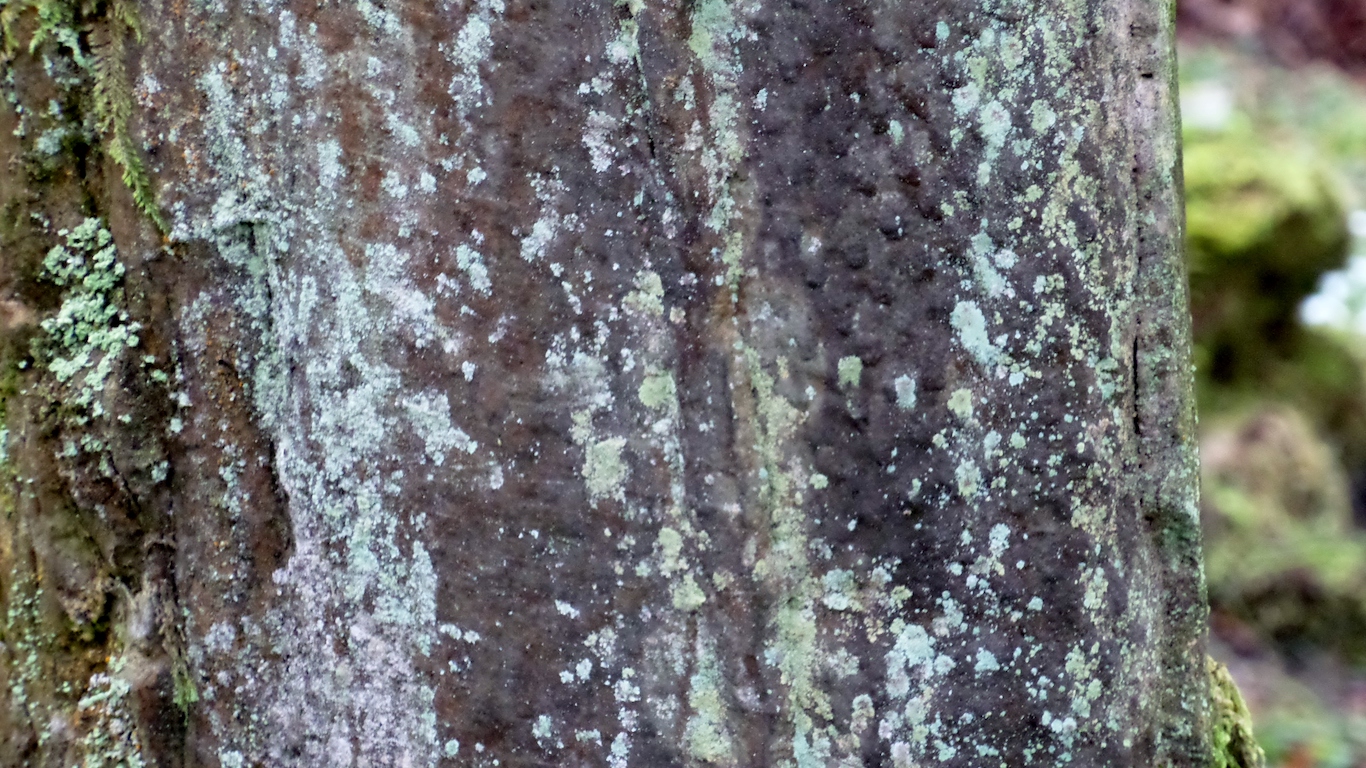
10. The scale tree
> Scientific name: Lepidodendrons
> Main habitat: Prehistoric swamp areas
Also known as the scale tree, the Lepidodendron was Earth’s dominant plant species during the Carboniferous Period, from about 359 million to about 299 million years ago. The trees grew close together and reproduced by use of spores. The planet was experiencing elevated levels of oxygen at that time, which meant plants grew at an accelerated rate. The scale tree grew to 130 feet high and lived for up to 15 years.
These trees’ closest counterparts from contemporary times are club mosses, evergreen herbs with needlelike leaves. By the Mesozoic era, the scale trees had disappeared, probably because of climate change.
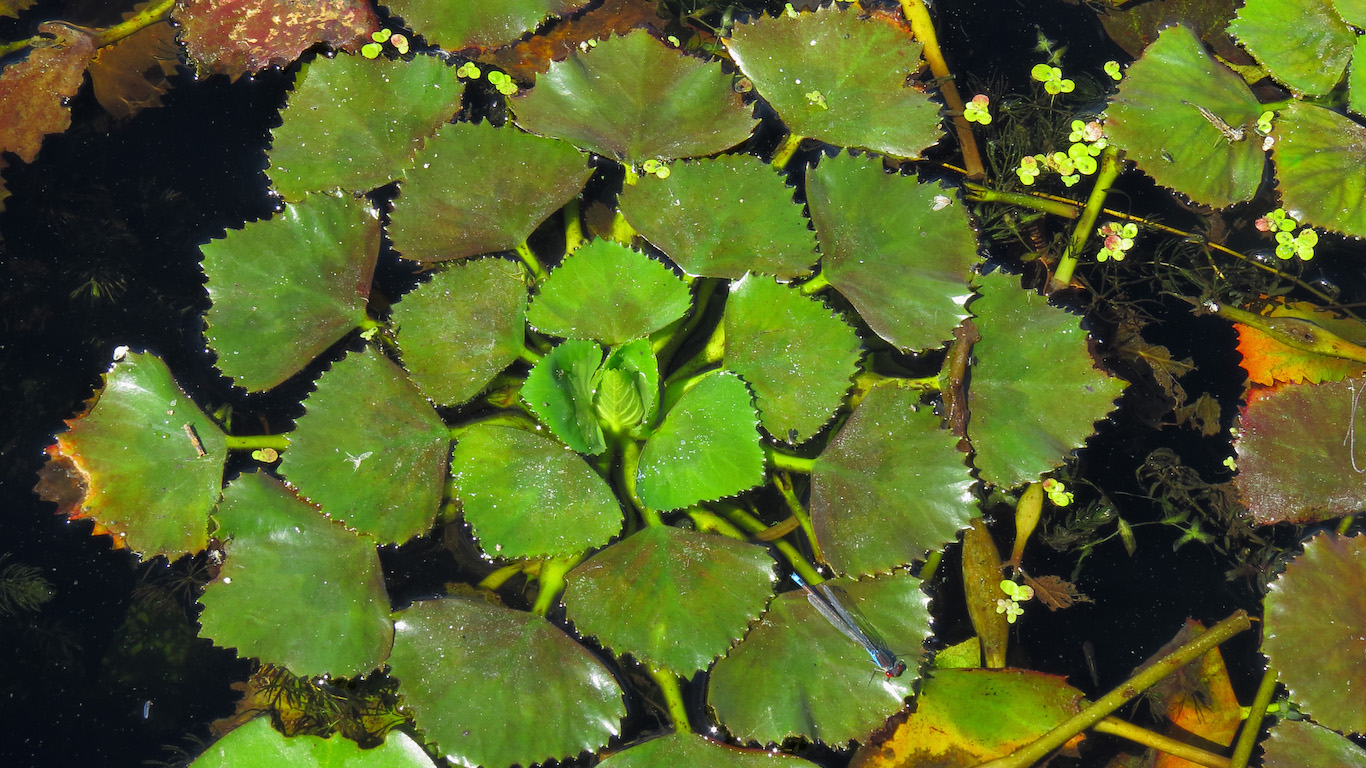
11. Water caltrop
> Scientific name: Trapa natans
> Main habitat: Native to temperate parts of Eurasia and Africa
The water caltrop is an aquatic plant with edible fruit commonly known as water chestnuts. It goes by a variety of other names such as buffalo nut, bat nut, devil pod, and mustache nut, among others.
Water caltrops have been used for a variety of purposes in China for thousands of years. In some parts of the world, such as Germany, the water caltrop is considered a near-threatened species.
[in-text-ad]
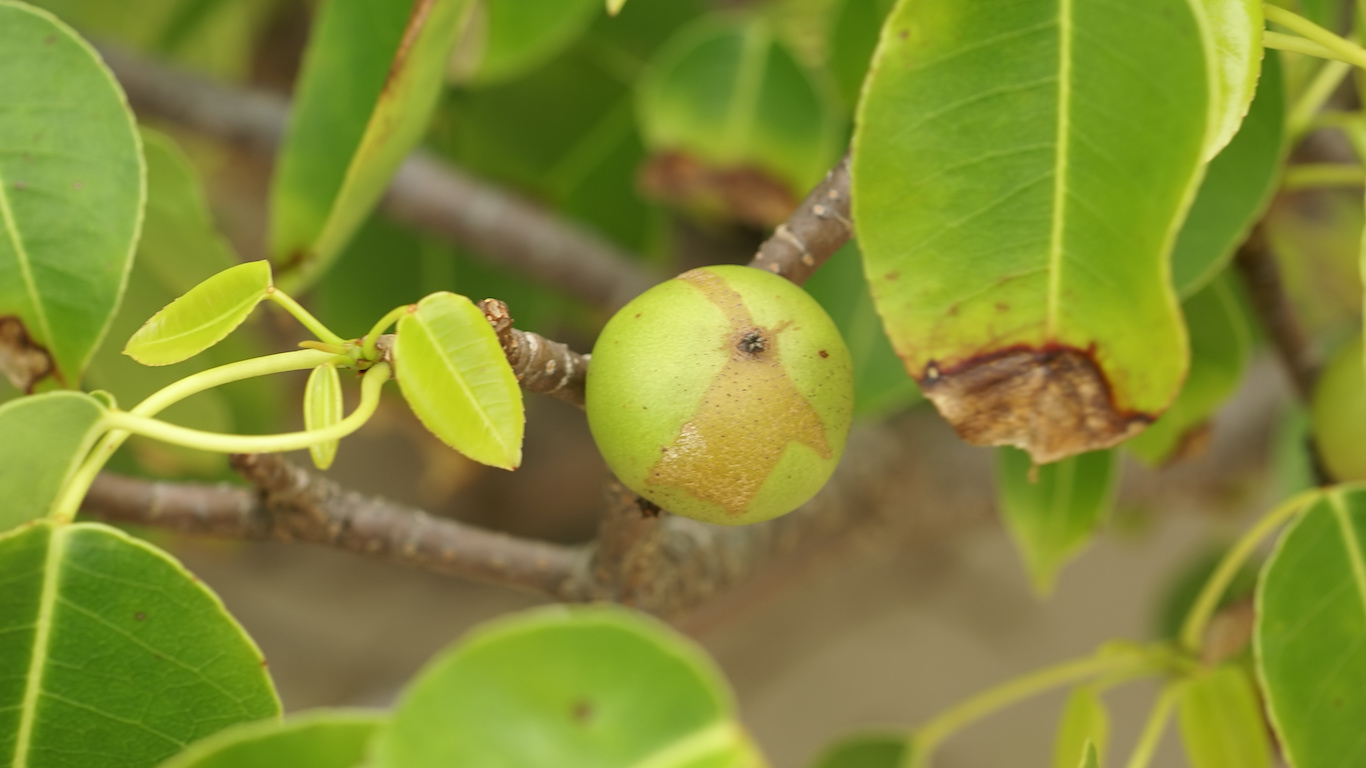
12. Death apple tree
> Scientific name: Hippomane mancinella
> Main habitat: Caribbean and Florida
The Spanish name for death apple tree is “árbol de la muerte,” which means “tree of death.” The Guinness Book of World Records calls this nature horror show the most dangerous tree in the world. It is native to the tropical parts of southern North America, as well as Central America, the Caribbean, and parts of South America. The plant discharges a burning sap that can cause serious injury. Eating its fruit can bring death. Good luck burning down a stand of them — the smoke from the fire could cause blindness.

13. Dancing plant
> Scientific name: Desmodium gyrans
> Main habitat: Southeast Asia
The dancing plant, found in Southeast Asia, is also called the telegraph plant or the semaphore plant. The dancing plant appears to react to sunlight and vibration, which helps explain why it seems to respond to music. This plant was a favorite of English naturalist Charles Darwin and is mentioned in his book “The Power of Movement in Plants.”
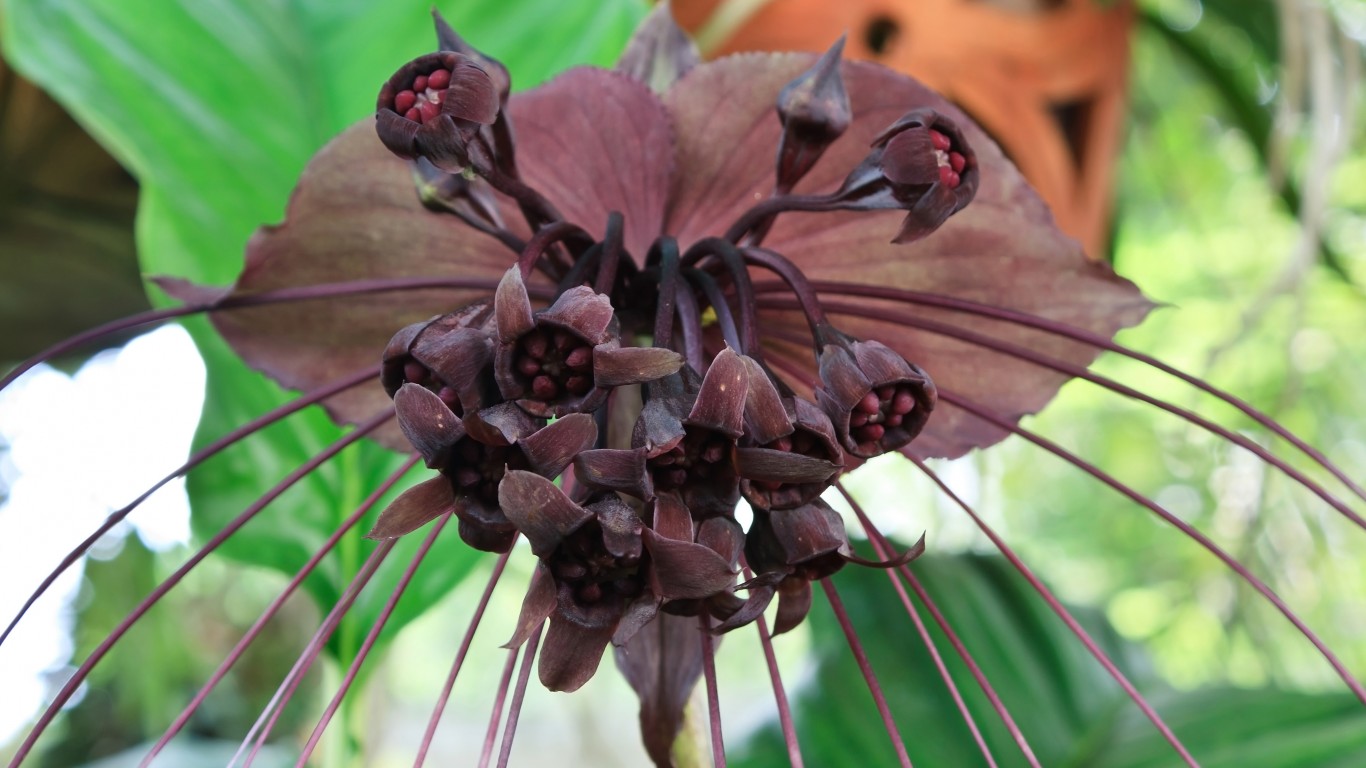
14. Black bat flower or devil flower
> Scientific name: Tacca Chantrieri
> Main habitat: West Africa and Southeast Asia
This plant grows in west Africa and southeast Asia and produces up to 25 black flowers that are said to look like eerie bat wings. They also have heavy berries and 24-inch long “whiskers” attached to the flowers.
[in-text-ad-2]
15. Rafflesia
> Scientific name: Rafflesia arnoldii
> Main habitat: Indonesia
The Rafflesia is found in Indonesia and is another “corpse flower,” so named because of its overpowering stench. Its scientific name is derived from the names of the two people who discovered the plant, Sir Stamford Raffles and his companion, surgeon-naturalist Dr. James Arnold. The plant is unique because it has no stems, leaves, or roots. For most of its life, the Rafflesia lives as an inconspicuous parasite on vines in tropical rainforests. Once the parasite develops a small bud, it can briefly burst into an alarmingly large plant. When it completely developed, the red/brown-colored flower can weigh as much as 24 pounds and be open for up to seven days.
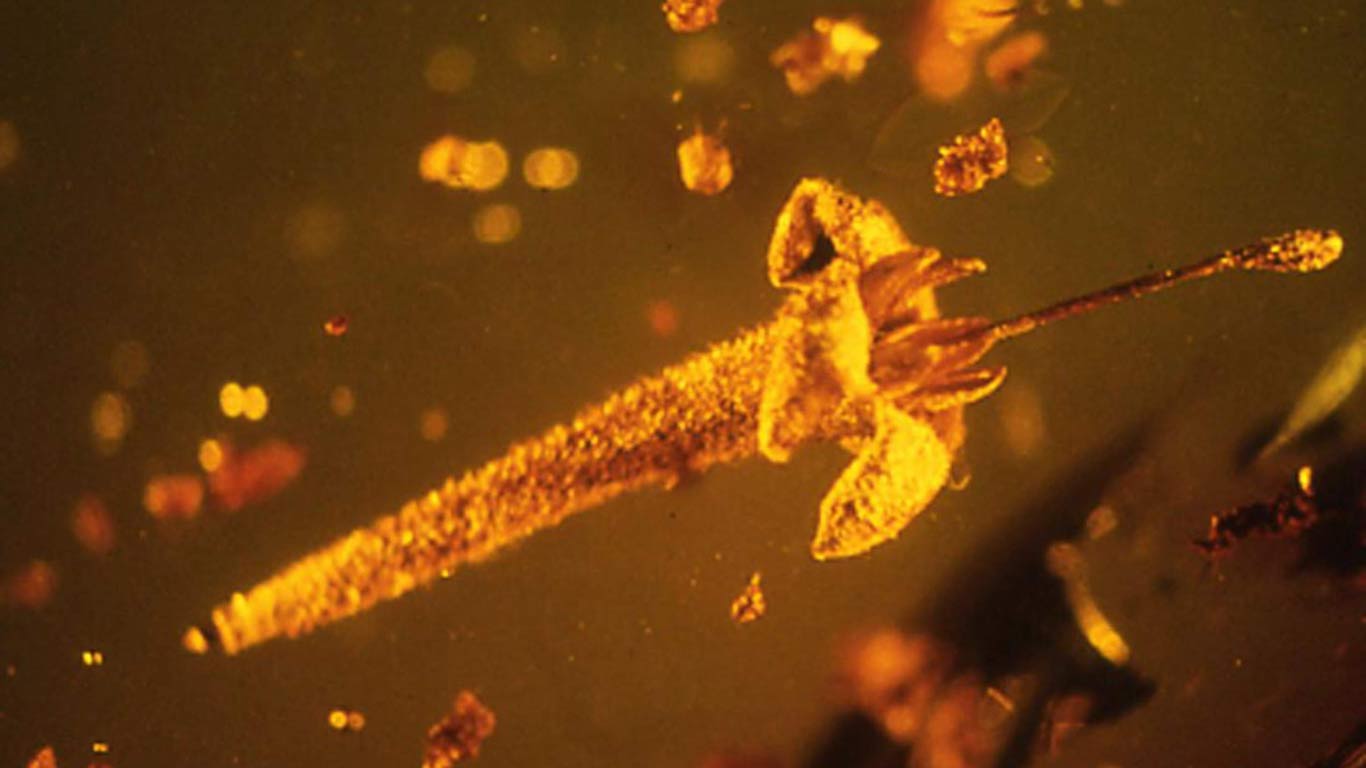
16. Strychnos electri
> Scientific name: Strychnos electri
> Main habitat: Dominican Republic
Strychnos electri is a sample of a fossilized plant encased in amber that was discovered by Oregon State University entomologist George Poinar in the Dominican Republic in 1986. Poinar sent high-resolution photos to Rutgers University Professor Lena Struwe, who determined that the flowers belonged to the strychnos genus of flowering plants still in existence.
Scientists named the plant after the Greek word for amber, elektron. These plants contain strychnine, an alkaloid found in pesticides. The plant was dated between 15 million and 45 million years ago and is the first neotropical plant preserved in amber, the fossilized resin of dead trees.
[in-text-ad]
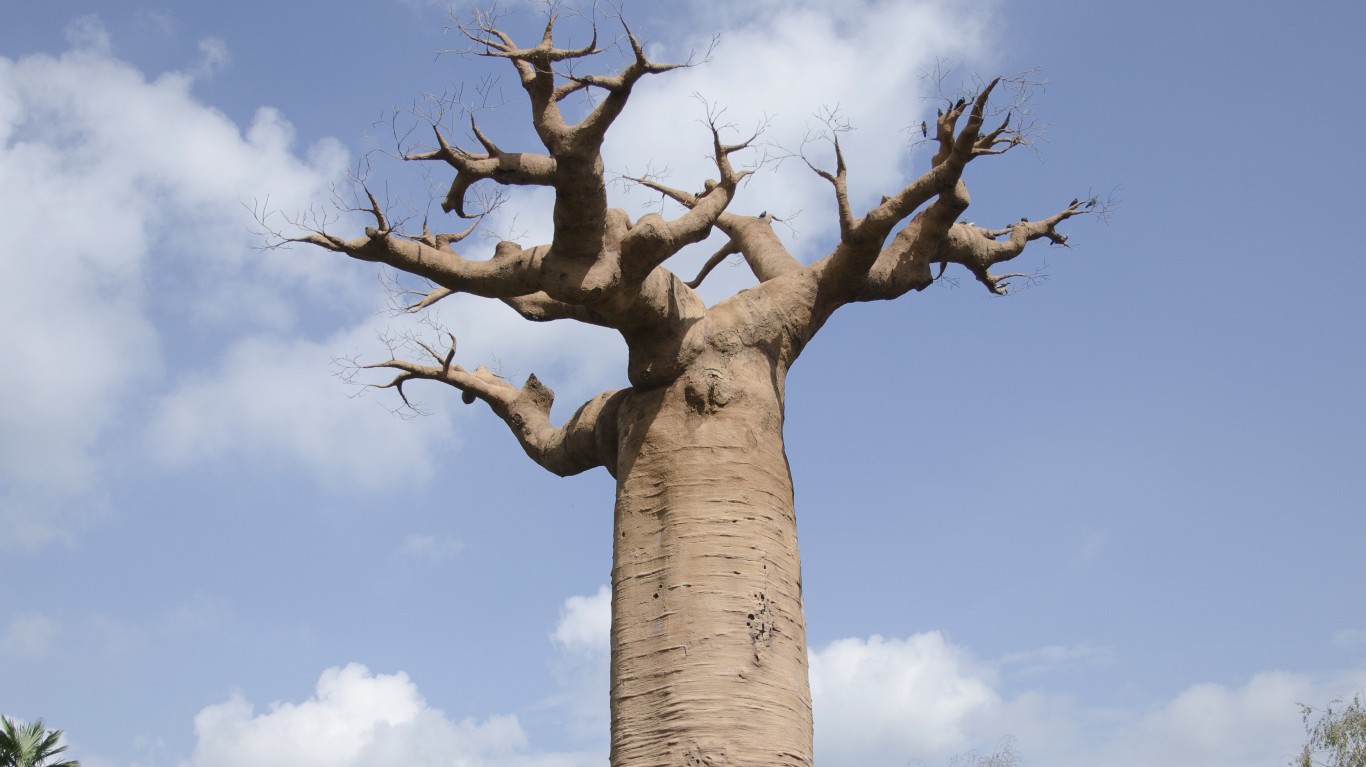
17. Grandidier’s baobab
> Scientific name: Adansonia grandidieri
> Main habitat: Madagascar
There are eight species of the baobab tree, and Grandidier’s baobab is the most impressive. The tree, which is found in arid regions on the island of Madagascar, off the eastern coast of Africa, stands 82 feet high, with a trunk that is 10 feet wide. The bark from the tree is highly sought after for its medicinal properties. The tree, named after Alfred Grandidier, a 19th-century French naturalist and explorer, is considered endangered by the International Union for Conservation of Nature because of slash and burn farming and overgrazing.
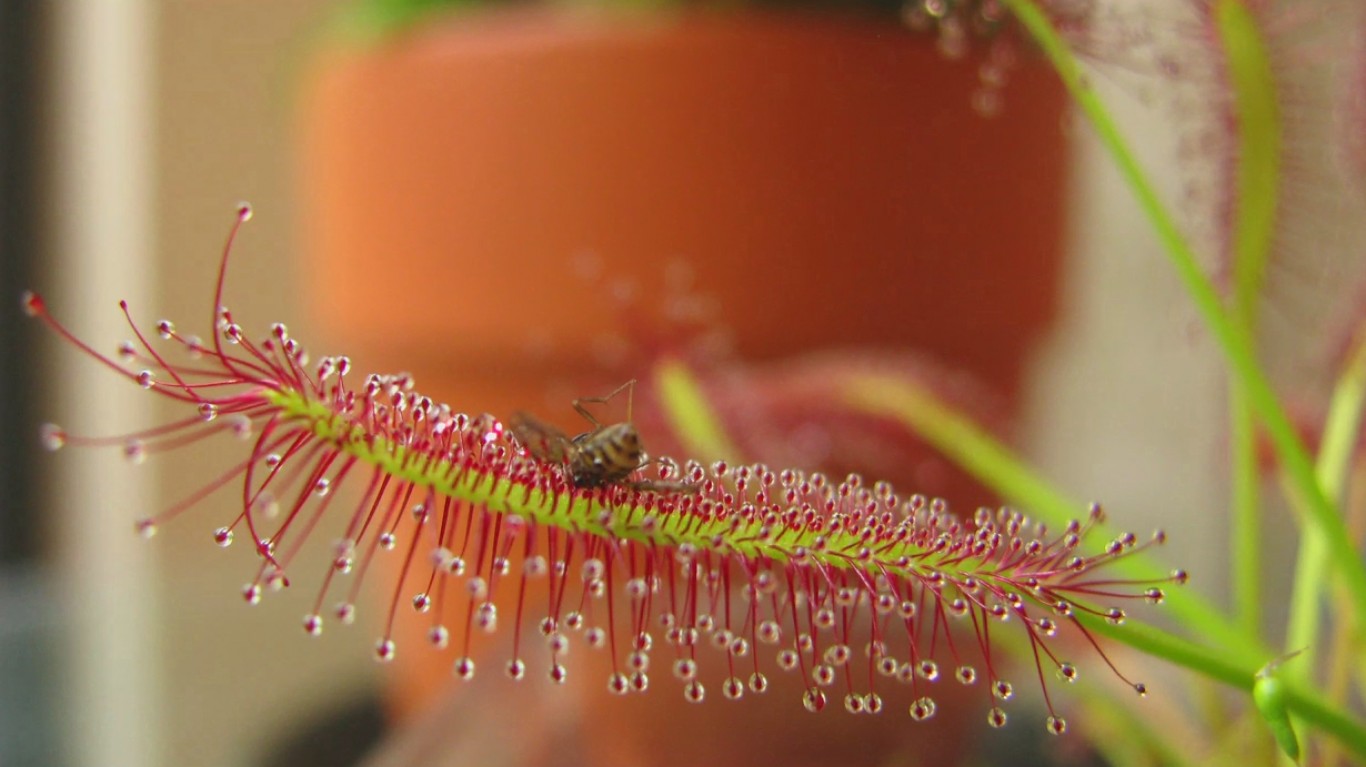
18. Cape sundew
> Scientific name: Drosera capensis
> Main habitat: South Africa
Native to South Africa, the cape sundew’s coloring and shape are suggestive of a ribbon candy. The plant snares insects in its “arms,” which are leaves saturated with sap. Cape sundew plants are prolific at reproducing and can survive in a variety of temperatures. New Zealand has placed it on a list of invasive plant species.
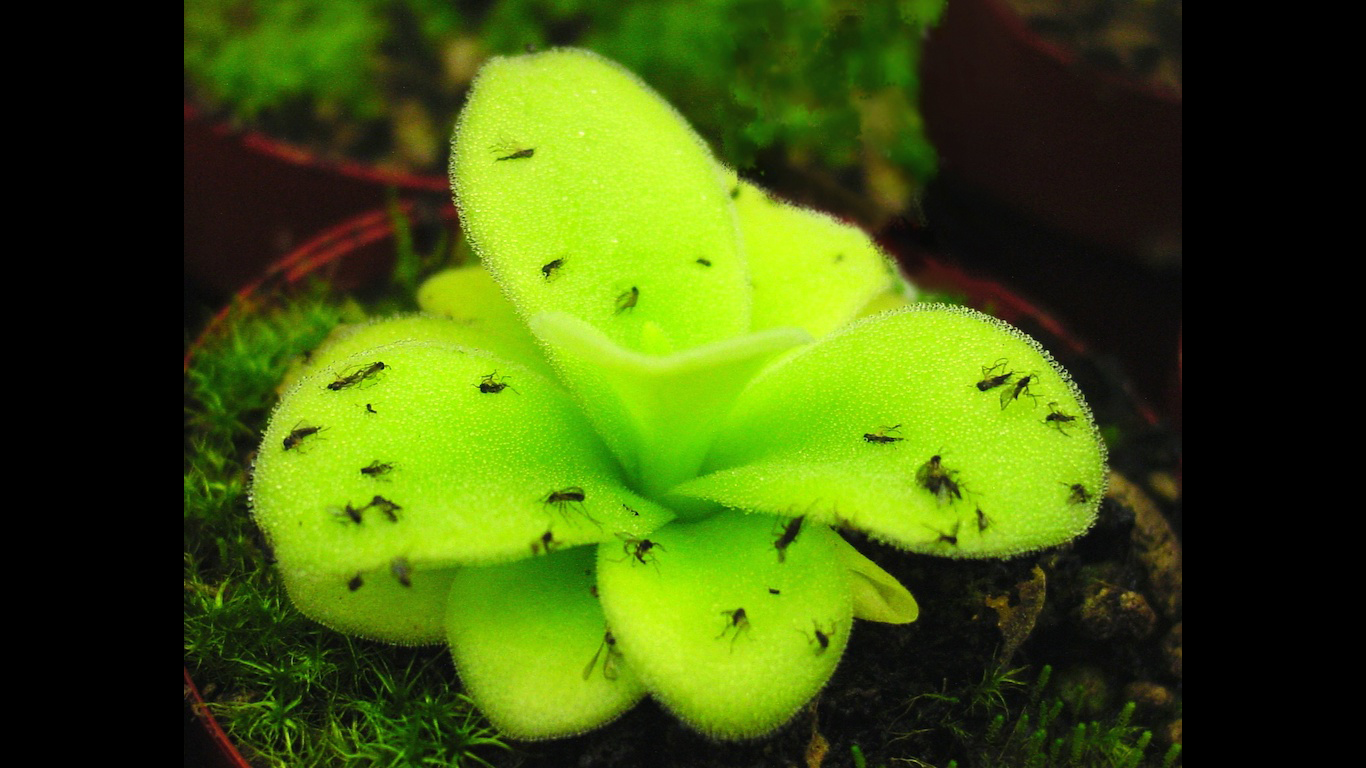
19. Flypaper plant
> Scientific name: Pinguicula gigantea
> Main habitat: Mexico
Flypaper plants, or butterworts, have a green, translucent glow that belies their ferocity. The tropical carnivorous plant snatches anything that lands on its leaves and then starts eating them. Its sticky surface traps such prey as mosquitoes and gnats.
[in-text-ad-2]
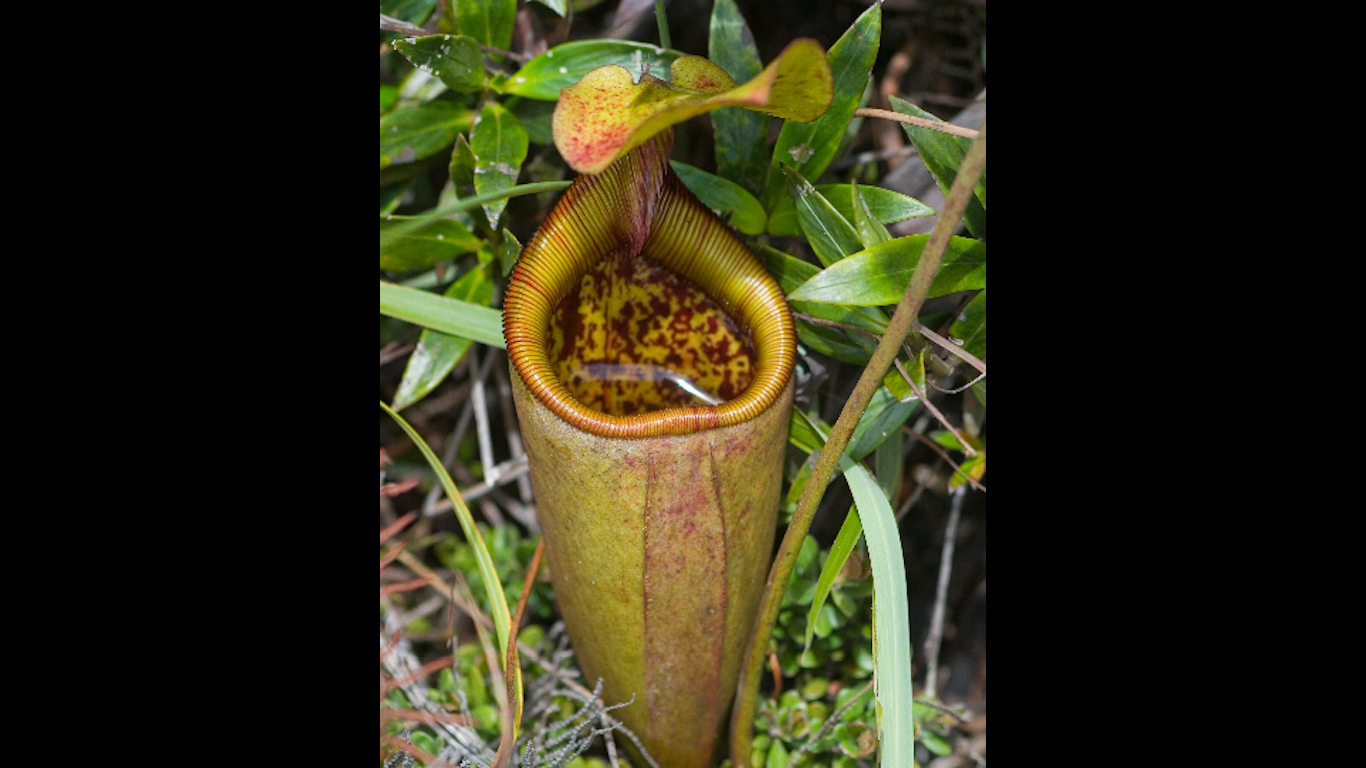
20. Rat-eating pitcher plant
> Scientific name: Nepenthes attenboroughii
> Main habitat: The Philippines
Discovered in 2007, the rat-eating pitcher plant is among the more recent plants discovered. It is also one of the weirdest of the carnivorous plants, believed to be the largest meat-eating plant in the world. As its name suggests, it is capable of digesting rats. The 4-foot tall pitcher-shaped plant lures the creatures with its nectar, and when the animal leans into the plant to drink the liquid, it tumbles into the pitcher’s waxy interior and is trapped by the sap. Acid-like juices then dissolve the animal. Scientists found the plant on Mount Victoria in the Philippines, and the scientific name — Nepenthes attenboroughii — comes from renowned nature broadcaster Sir David Attenborough.
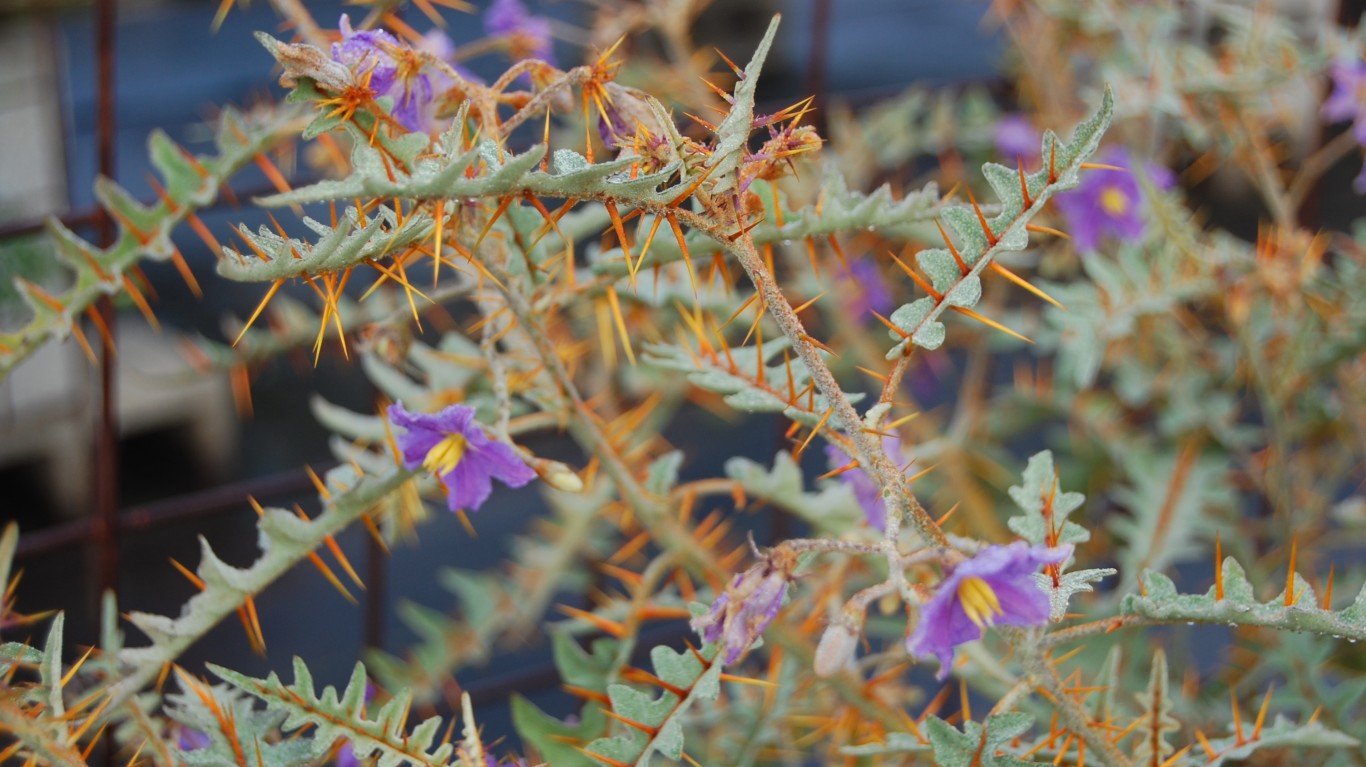
21. Porcupine tomato
> Scientific name: Solanum pyracanthos
> Main habitat: Madagascar and islands in western Indian Ocean
The porcupine tomato, a weed covered in large, spiky, orange-colored poisonous thorns found in Madagascar and on islands in the western part of the Indian Ocean. Bushes of this weed can grow up to 5 feet. All of the plant is potentially dangerous to humans because of its toxins.
[in-text-ad]
22. Victoria water lily
> Scientific name: Victoria amazonica
> Main habitat: Amazon region
The leaves of these water lilies, found in the Amazon region, can grow to up to 6 feet wide. The plant knows how to protect itself. The underside of the lily is thorny enabling it to shield it from being eaten. The flowers of Victoria water lily bloom at night, though each flower lasts only about two or three days.
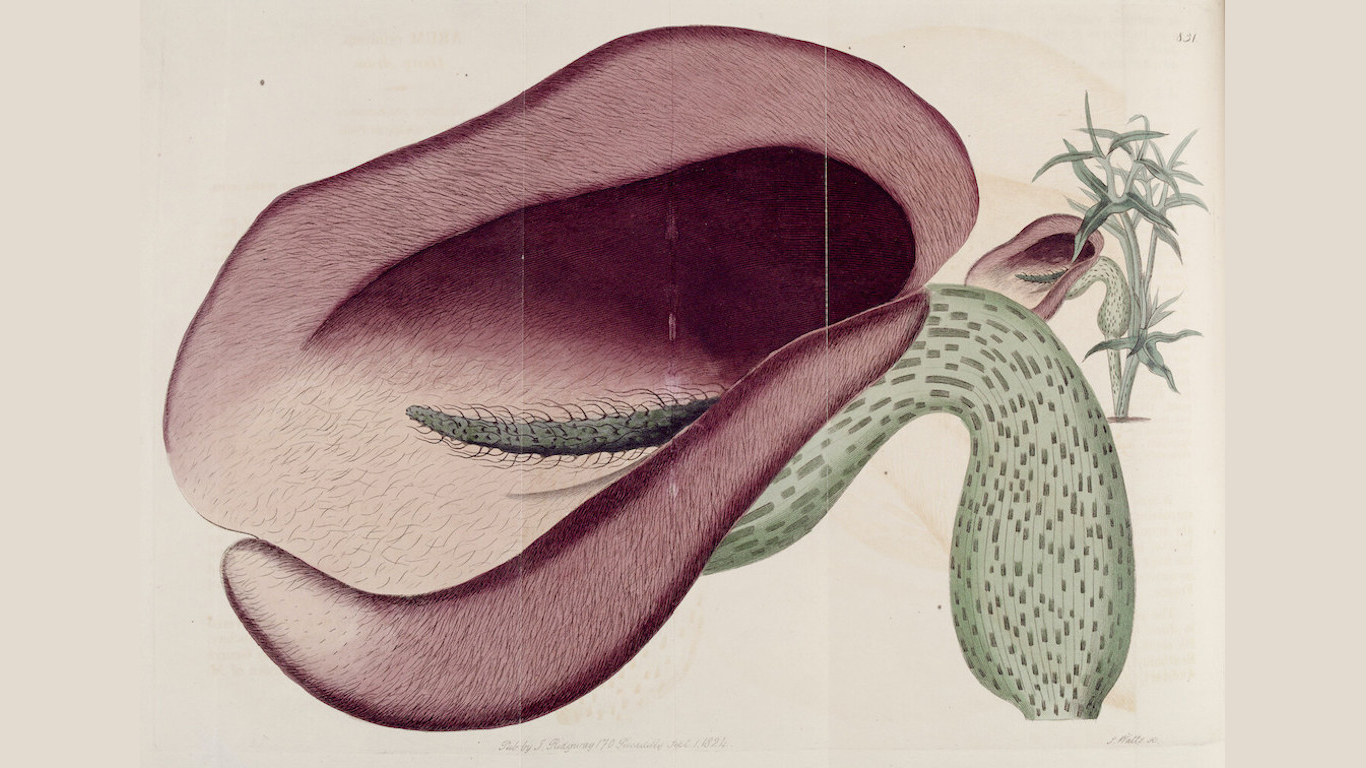
23. Dead horse arum lily
> Scientific name: Helicodiceros muscivorus
> Main habitat: Corsica, Mediterranean islands
The dead horse arum lily, found in Corsica and other Mediterranean islands, smells like rotting meat. The plant’s pungent scent is intended to draw in insects who are trapped the first night after the plant flowers. When the insects are released, they are covered in pollen. The plant is thermogenic, meaning it can produce its own heat, which accentuates the rotting meat smell.
24. Dragon’s blood tree
> Scientific name: Dracaena cinnabari
> Main habitat: The island of Socotra, off the coast of Yemen in the Indian Ocean.
The Dragon’s blood tree, found on the island of Socotra, off the coast of Yemen, is related to the palm tree. Its leaves can grow up to 2 feet long. The tree with the distinctive umbrella shape derives its name from its dark resin. This resin, called “dragon’s blood,” has been used for medicine and dyes since ancient times. The tree is considered vulnerable by the International Union for Conservation of Nature because the island is drying out due to climate change.
[in-text-ad-2]
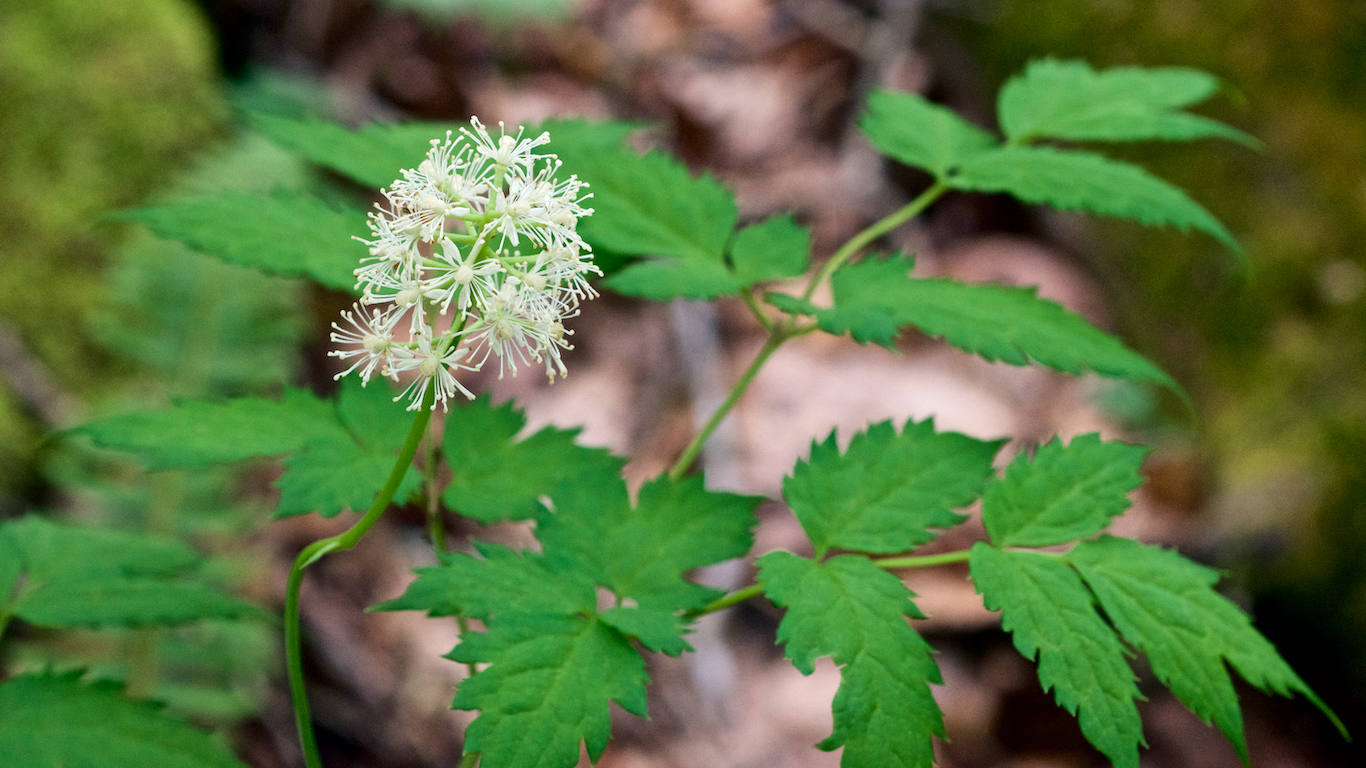
25. Doll’s eye
> Scientific name: Actaea pachypoda
> Main habitat: Eastern North America
Doll’s eye, a 2-foot tall plant found in eastern North America, produces white berries that have black “pupils” that give the berries the appearance of a doll’s eyes. The deep pink stems provide a colorful contrast to the berries. Looks, however, can be deceiving. The plant, also called white baneberry, is poisonous, and this includes the leaves, stalk, and the berries. Botanists incorporated the word bane, a term used to refer to killer, into names of plants that are toxic.
26. Rootless duckweed
> Scientific name: Wolffia arrhiza
> Main habitat: Native to Europe, Africa, and parts of Asia
The rootless duckweed holds the distinction as the world’s smallest plant with flowers, at about 1/32nd of an inch. The rootless duckweed can be found in ponds and other water sources. The rootless plant is apparently tasty, and scientists at the University of Jena in Germany believe it can be a potential source of protein, according to a story in Science Daily.
[in-text-ad]
27. Golf ball
> Scientific name: Mammillaria herrerae
> Main habitat: Mexico
The golf ball plant is found in the mountains of central Mexico, and at first glance, the white-colored cactus plant looks a lot like an actual golf ball, albeit one that landed far from its intended target. The spiny characteristics of the plant help shield it from the sun. The plant sprouts pink flowers and is a favorite among seekers of rare plant specimens. Because of its appeal, and because of encroaching housing development, the golf ball plant is considered critically endangered by the International Union of Conservation of Nature.
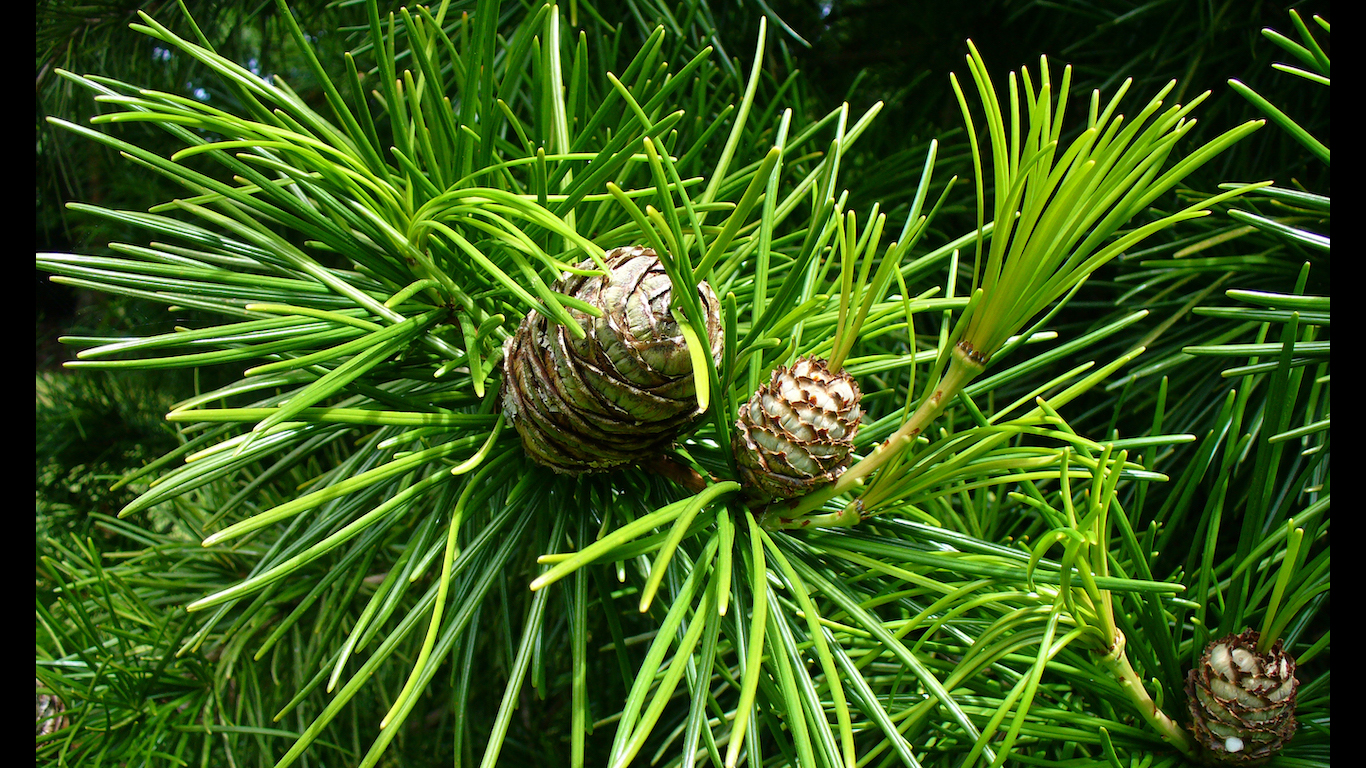
28. Japanese umbrella pine
> Scientific name: Sciadopitys verticillata
> Main habitat: Japan
The Japanese umbrella pine is one of the world’s oldest plants — its fossil history goes back 230 million years. It is an unusual tree in that it has no closely related species. The plant is indigenous to Japan and is grown as a decorative plant for gardens. The conifer is rare and highly prized. It can take up to 100 years to reach a mature height of 30 feet. The Japanese umbrella pine is considered a sacred tree in Japan and is closely associated with the Buddhist faith.
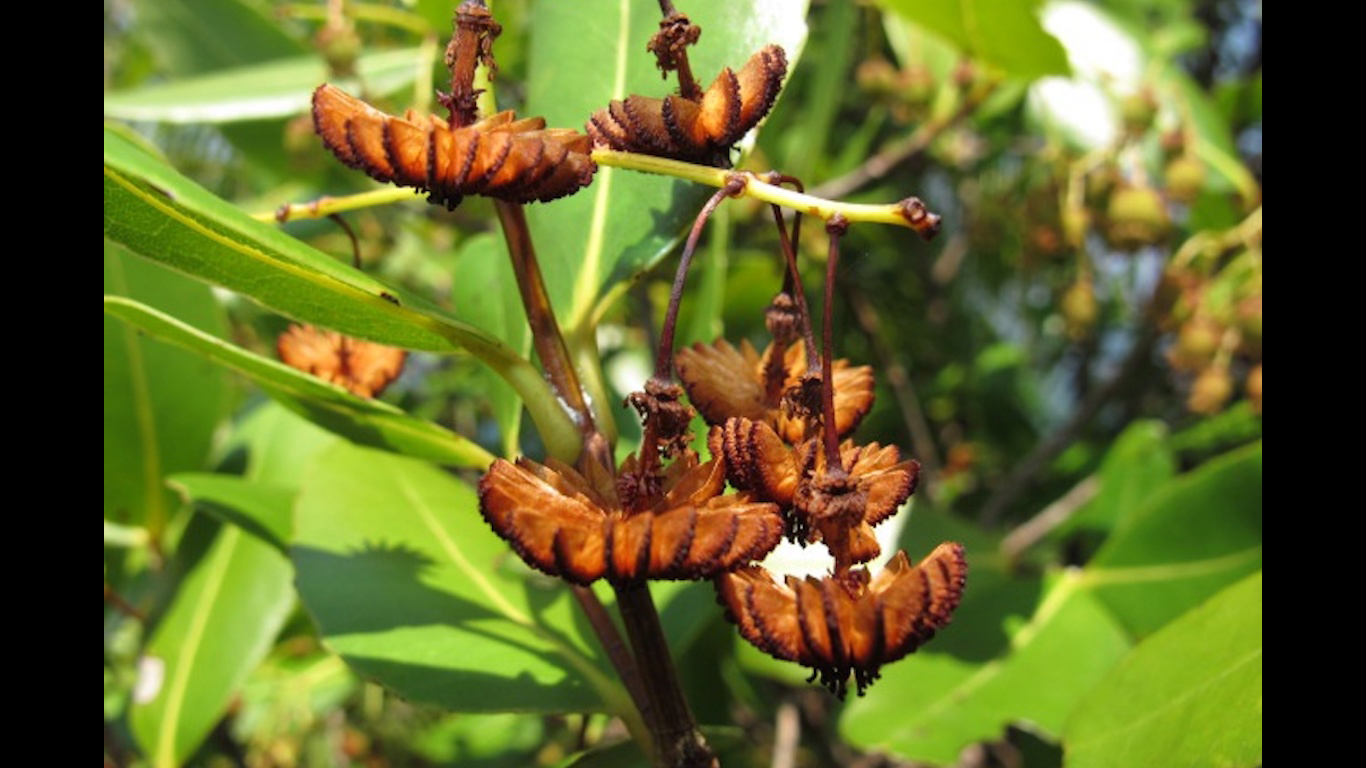
29. Jellyfish tree
> Scientific name: Medusagyne oppositifolia
> Main habitat: Seychelles island of Mahe
The jellyfish tree gets its name from the shape of its fruit, which resembles a jellyfish when the fruit is broken open. Scientists thought the tree was extinct and no specimen was observed in its native Seychelles until it was rediscovered in 1970. It is a rare plant, and as of 2016, there were fewer than 100 jellyfish trees remaining. The IUCN considers the plant critically endangered because it is threatened by human activity.
[in-text-ad-2]
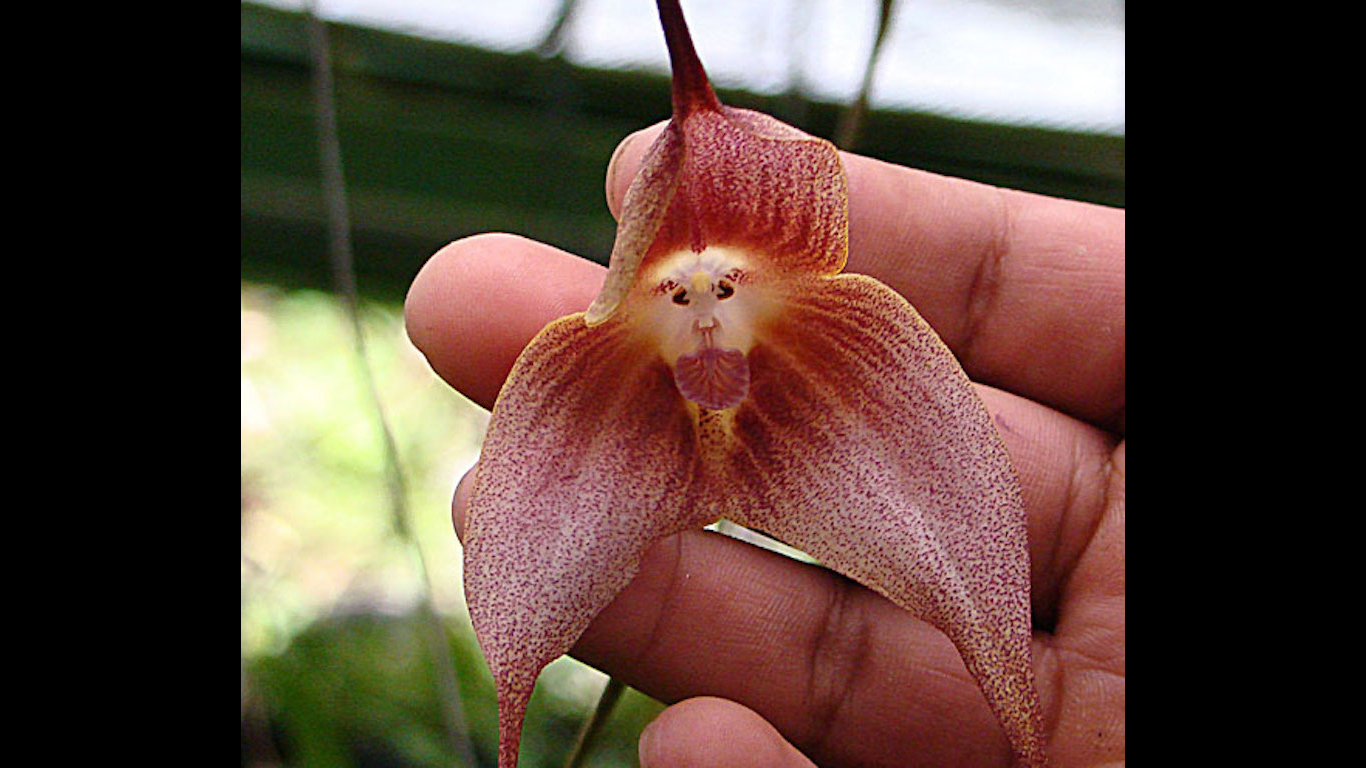
30. Monkey face orchid
> Scientific name: Dracula simia
> Main habitat: Southeastern Ecuador and Peru
The center of this exotic flower looks strikingly like our simian relatives, so the scientific name of Dracula simia is appropriate. Adding to the effect is the elongated petals of the plant. The plant’s aroma suggests oranges when it blooms, which can occur during any season. The monkey face orchid can be found at higher altitudes in Ecuador and Peru.
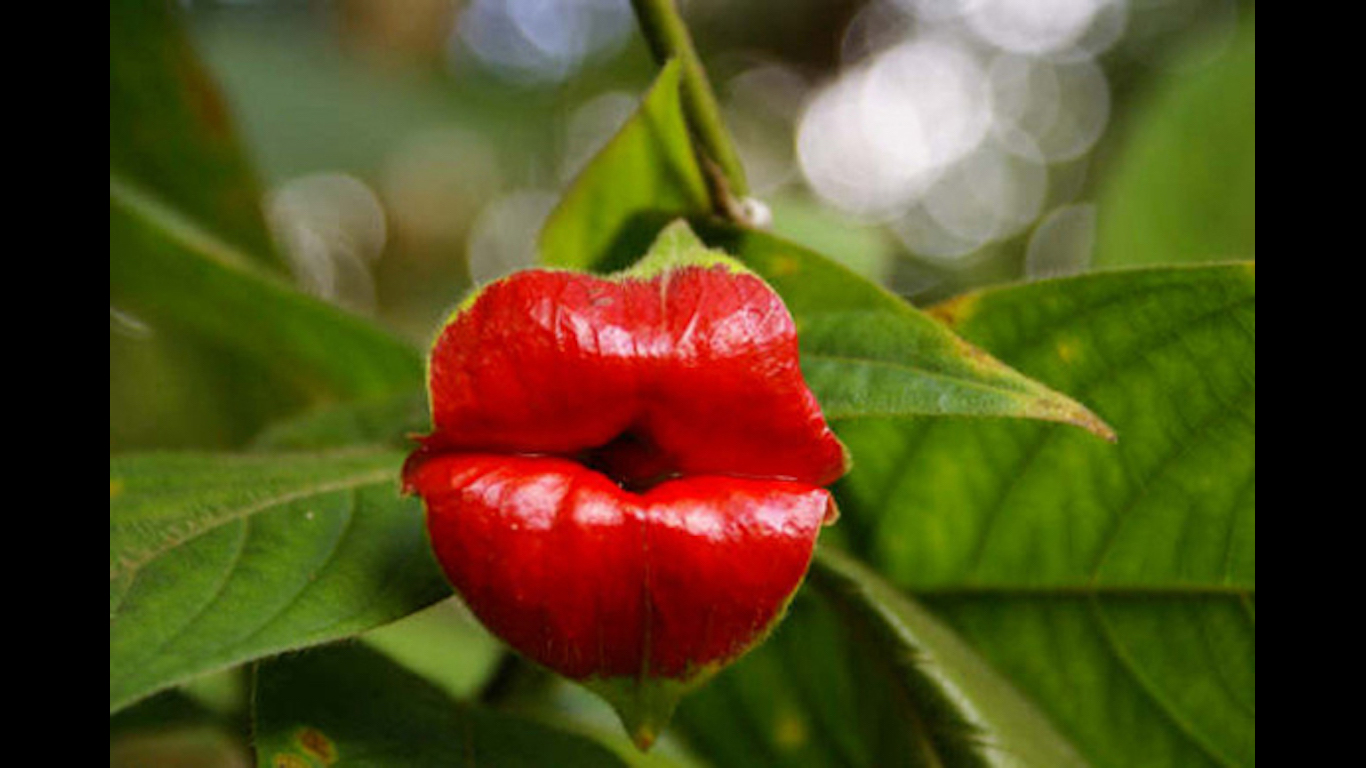
31. Hooker’s lips
> Scientific name: Psychotria elata
> Main habitat: Central and South America
Cinephiles might think the hooker’s lips flower looks like the advertisement for the cult classic film “The Rocky Horror Picture Show.” The “lips” are actually leaf-like, not petals, and only resemble lips for several days after they open. Once they do open, the plant displays minute yellow and white flowers. The unique character of the flower has made them popular, and because their habitat is under threat from deforestation, they are becoming rarer.
[in-text-ad]
32. Swaddled babies
> Scientific name: Anguloa uniflora
> Main habitat: Andes region of South America
This orchid was found in the Andes Mountains in the late 18th century. It resembles infants wrapped in blankets inside of the plant when the flower blooms. The flower with creamy white petals, which also goes by the name of tulip orchid, grows to about 2 feet in height and gives off a cinnamon scent.
33. Flying duck orchid
> Scientific name: Caleana major
> Main habitat: Australia, Tasmania, Victoria, New South Wales
The flying duck orchid is aptly named, strongly resembling the waterfowl. The 20-inch tall plant’s reddish-brown hue allows it to blend into its native Australian landscape. Gardeners who want to include the distinctive plant in their gardens will be discouraged to know it cannot flourish outside of Australia. The flying duck orchid’s growth depends on a fungus indigenous to Australia.
34. The cobra lily
> Scientific name: Darlingtonia Californica
> Main habitat: Northern California and Oregon
You don’t think of lilies as a menacing-looking flower, but the cobra lily might be the exception. It is a carnivorous plant strongly resembling a cobra snake. It is also called calf’s head, California pitcher plant, or cobra plant. Even the leaves of the plant, which turn red in the sun, suggest a snake’s tongue. The cobra lily lures its prey by emitting a fragrant scent from its trap and captures it in its pitcher.
[in-text-ad-2]
35. Naked man orchid
> Scientific name: Orchis italica
> Main habitat: Morocco to Lebanon
This orchid resembles a human male, sans clothes, and can be found in the Mediterranean region, particularly along the coast. The orchid can grow to a height of just over 1.5 feet. Its most common colors are light purple and pink, though white specimens have been found. Like many flowers on this list, the flower is under threat possibly because of their overuse as a medicine.
To identify the weirdest plants of all time, 24/7 Tempo consulted a variety of sources such as earthrangers.com, oldest.com, and sciencedaily.com to compile the list of what are considered to be the strangest, most unusual members of the plant kingdom. Though many plants are found in Asia and Africa, odd plants can be found all over the world, and 24/7 Tempo’s list includes plants on every continent.
Plants that we consider “weird” possess characteristics that challenge common perceptions about plants. These distinguishing characteristics include plants with carnivorous diets; unconventional means of pollinating; quirky defense mechanisms; plants with pungent aromas; and plants that simply appear odd. There are also plants with curious defense properties and those that appear to be responding to music.
Other plants are downright dangerous. The death apple tree, found in the Caribbean, has been called the most dangerous tree in the world. The tree oozes a burning sap that can cause serious injury. Eating its fruit can bring death. Christopher Columbus called its fruit “manzanilla de la muert”’ or the little apple of death.
Get Ready To Retire (Sponsored)
Start by taking a quick retirement quiz from SmartAsset that will match you with up to 3 financial advisors that serve your area and beyond in 5 minutes, or less.
Each advisor has been vetted by SmartAsset and is held to a fiduciary standard to act in your best interests.
Here’s how it works:
1. Answer SmartAsset advisor match quiz
2. Review your pre-screened matches at your leisure. Check out the advisors’ profiles.
3. Speak with advisors at no cost to you. Have an introductory call on the phone or introduction in person and choose whom to work with in the future
Get started right here.
Thank you for reading! Have some feedback for us?
Contact the 24/7 Wall St. editorial team.
 24/7 Wall St.
24/7 Wall St.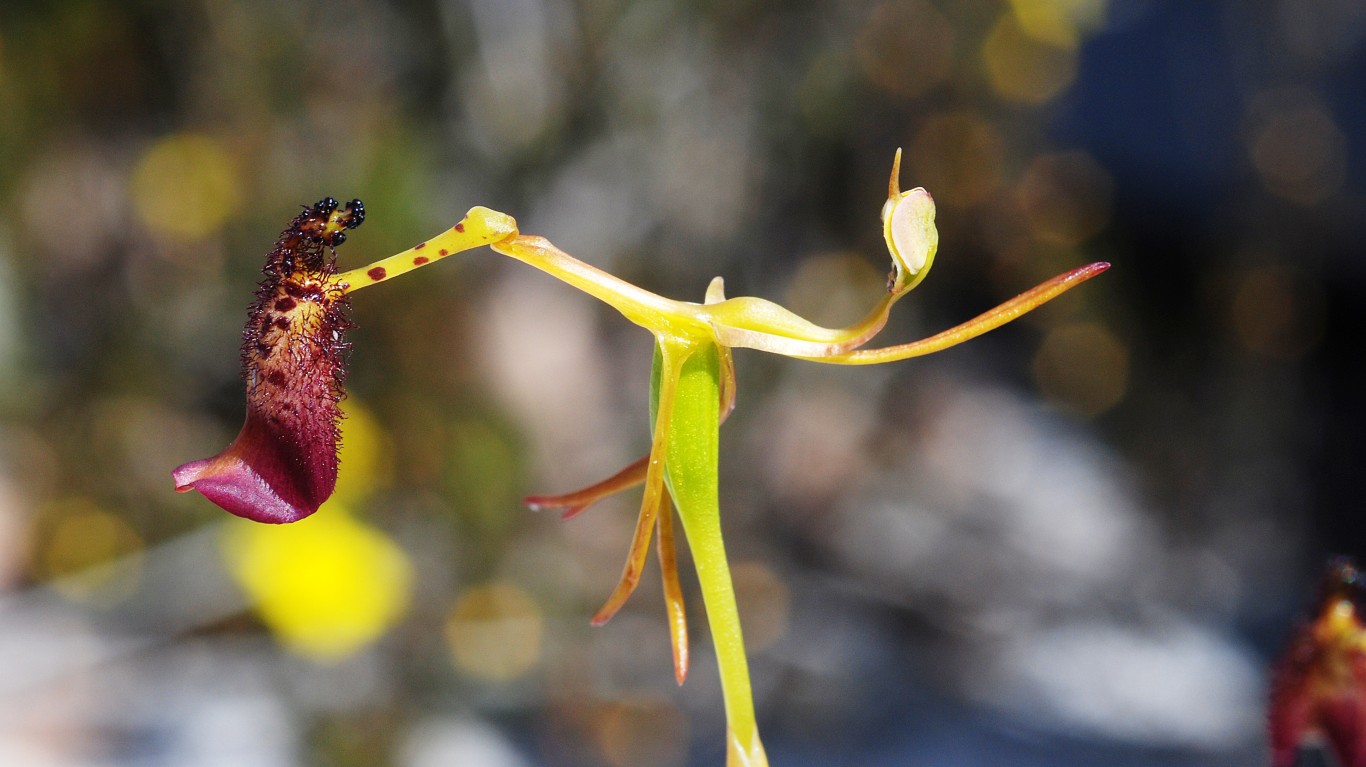
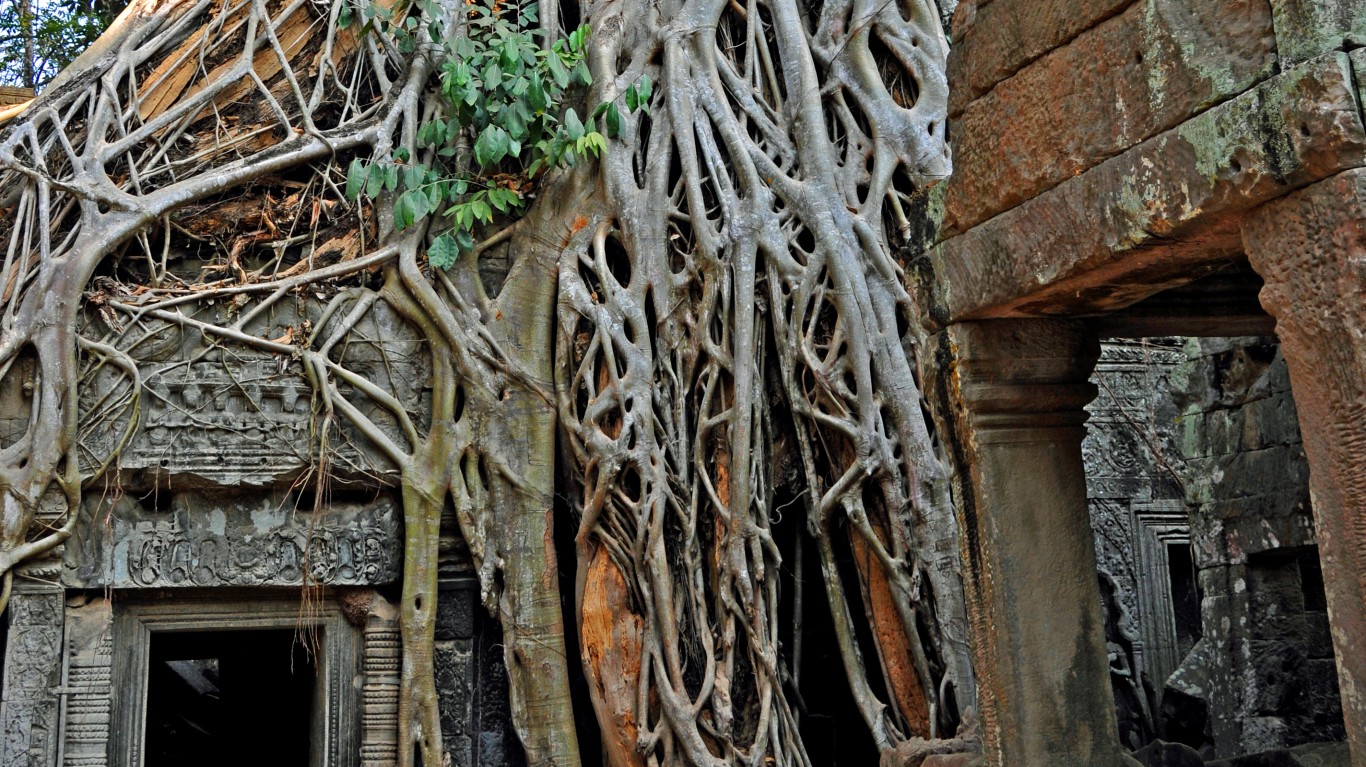
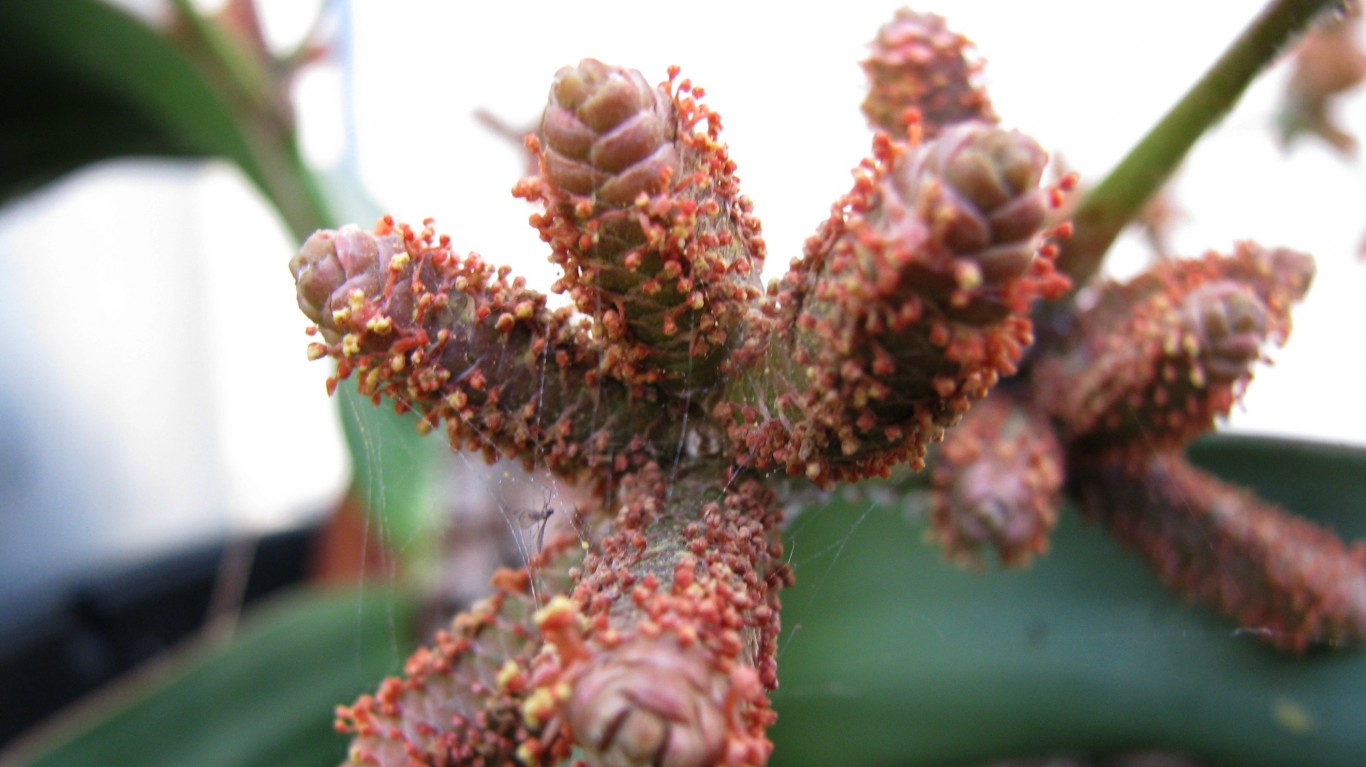
 24/7 Wall St.
24/7 Wall St.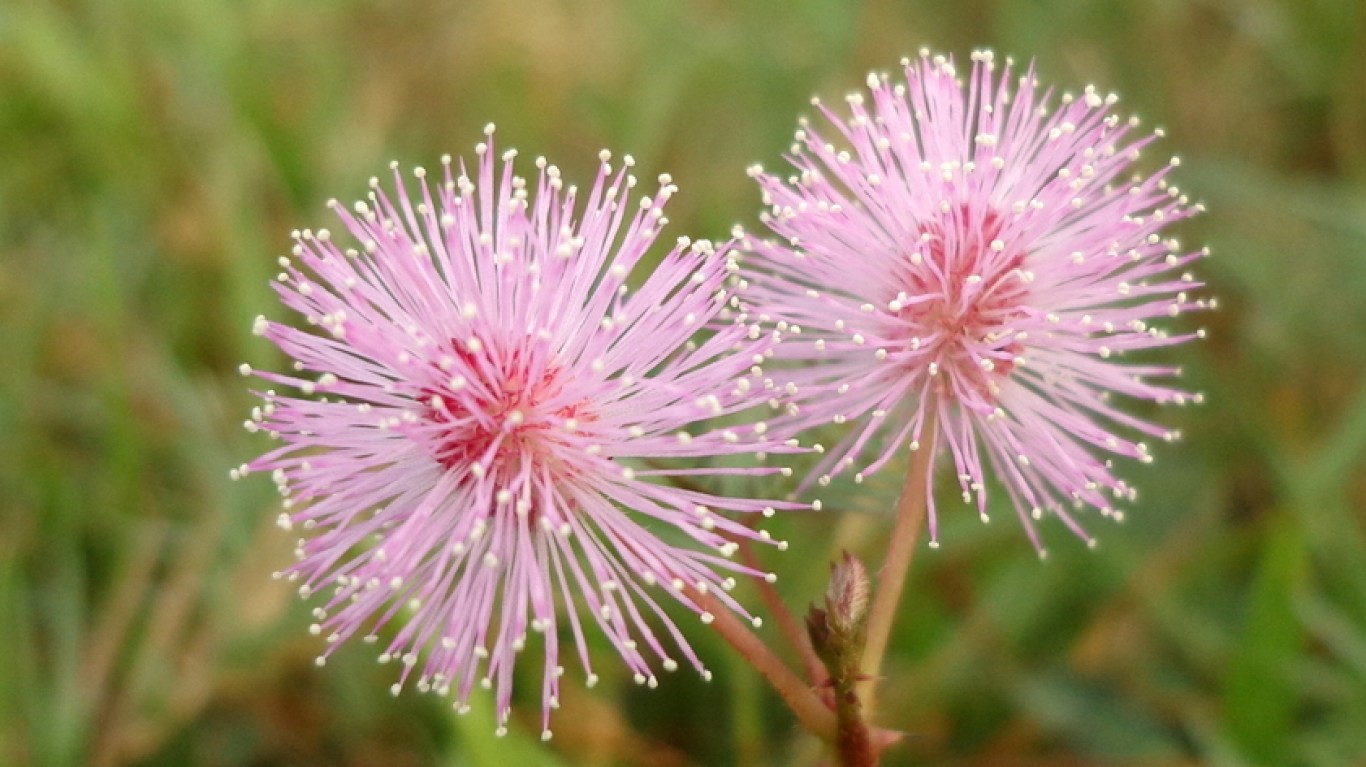

 24/7 Wall St.
24/7 Wall St.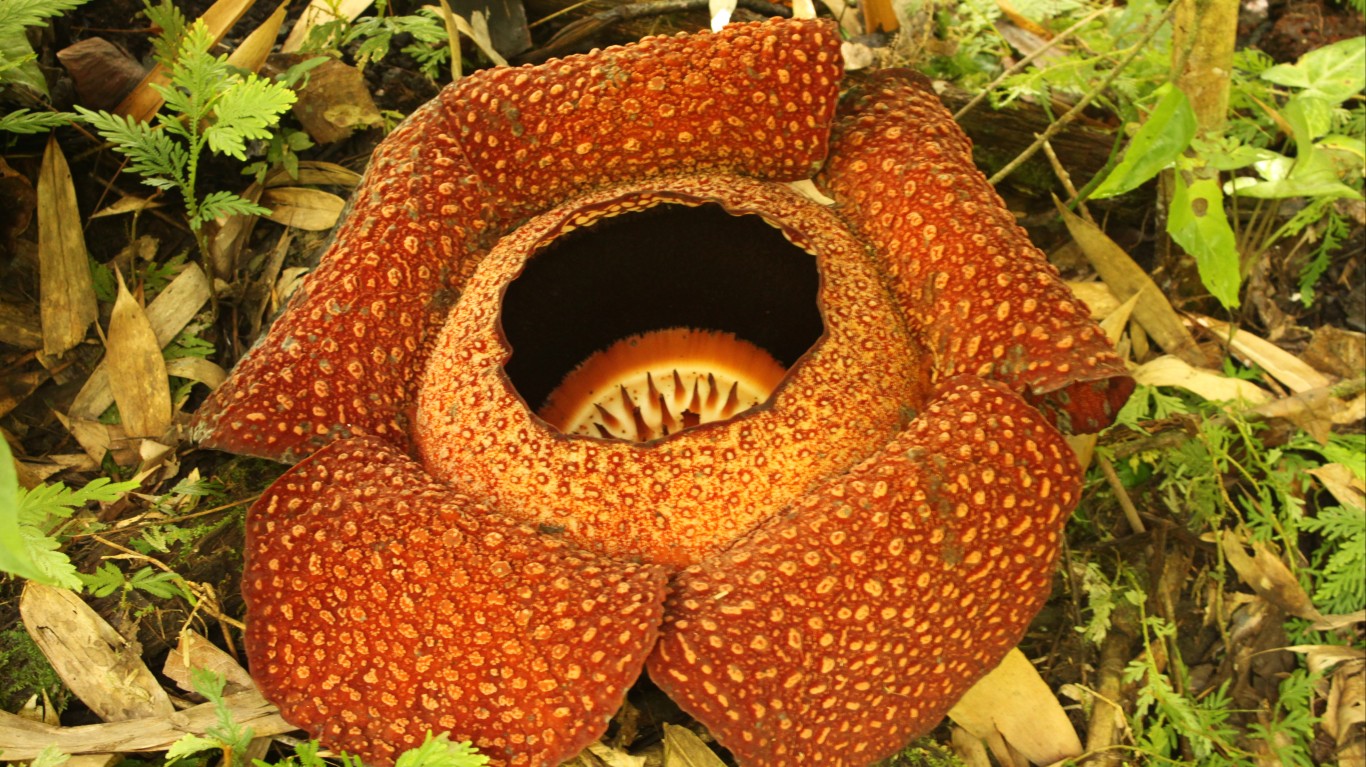
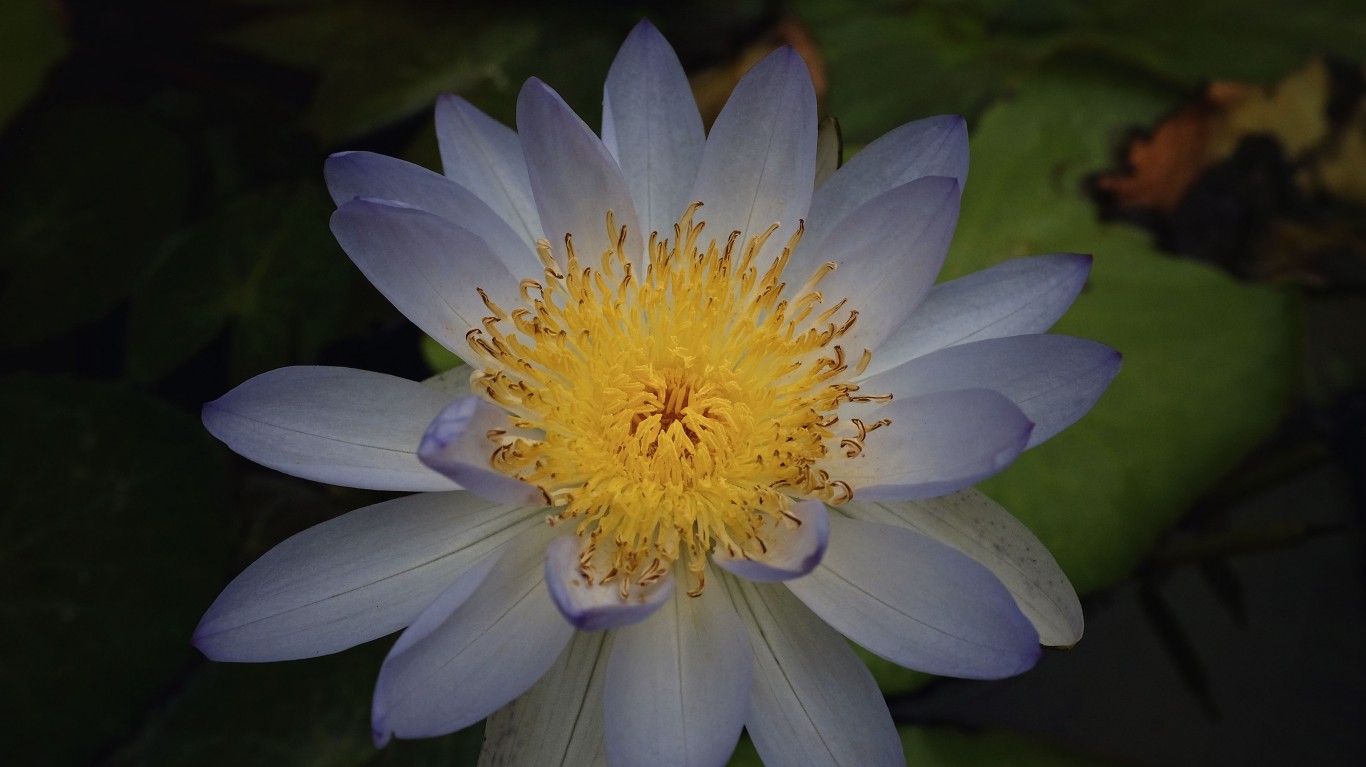
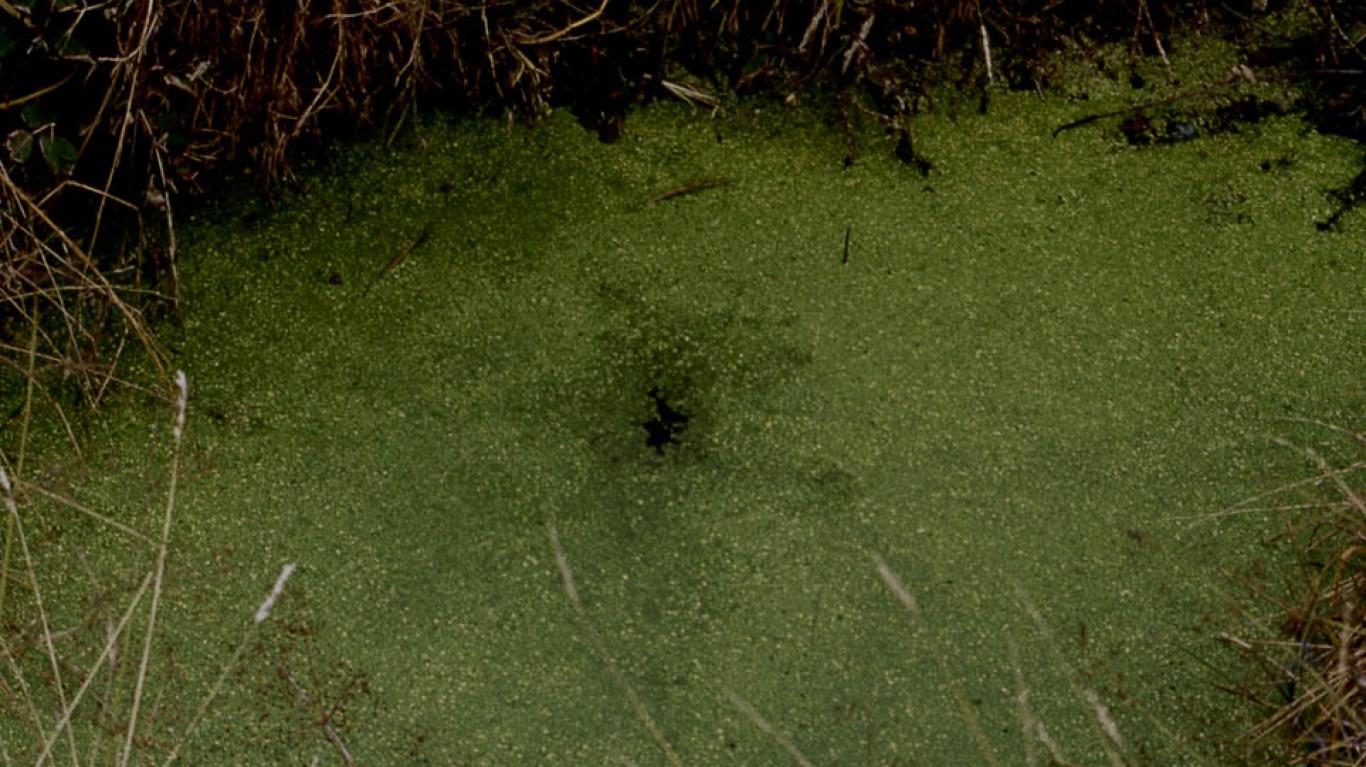
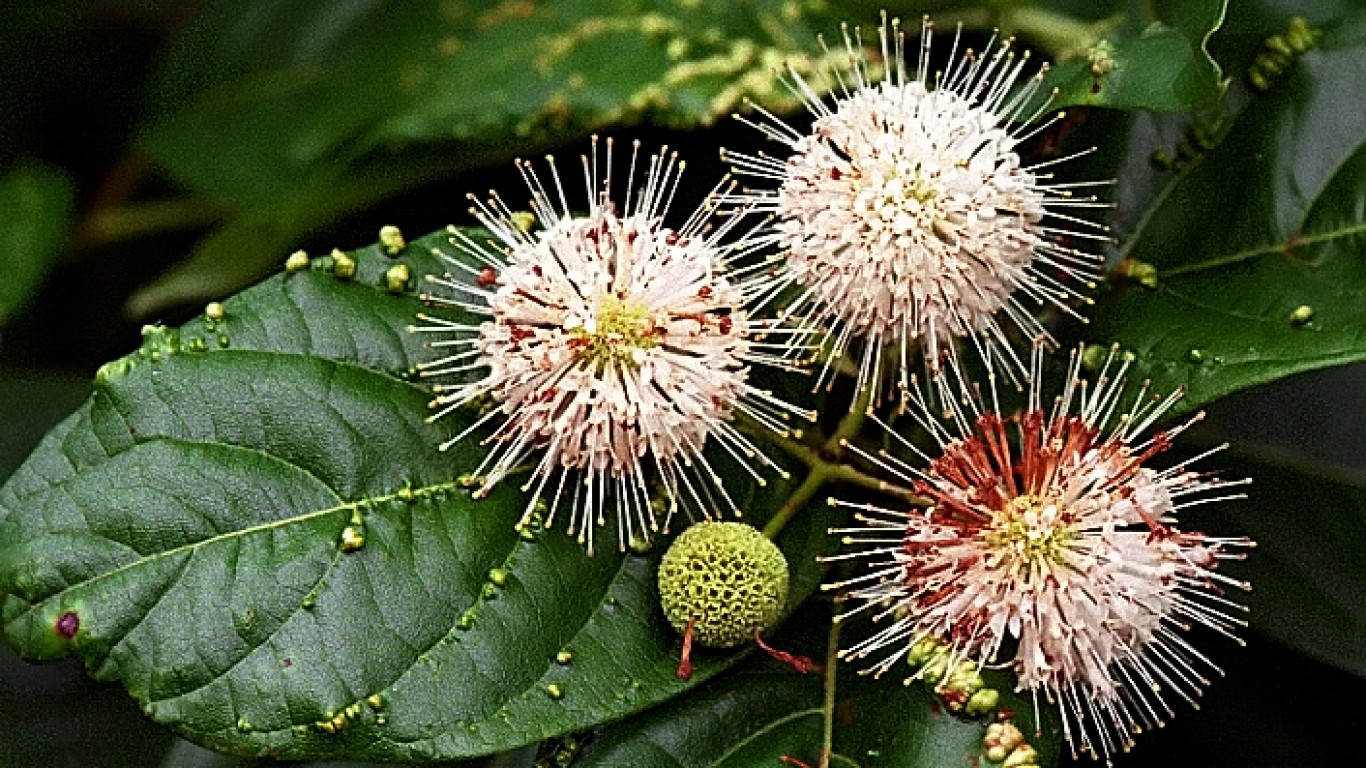
 24/7 Wall St.
24/7 Wall St.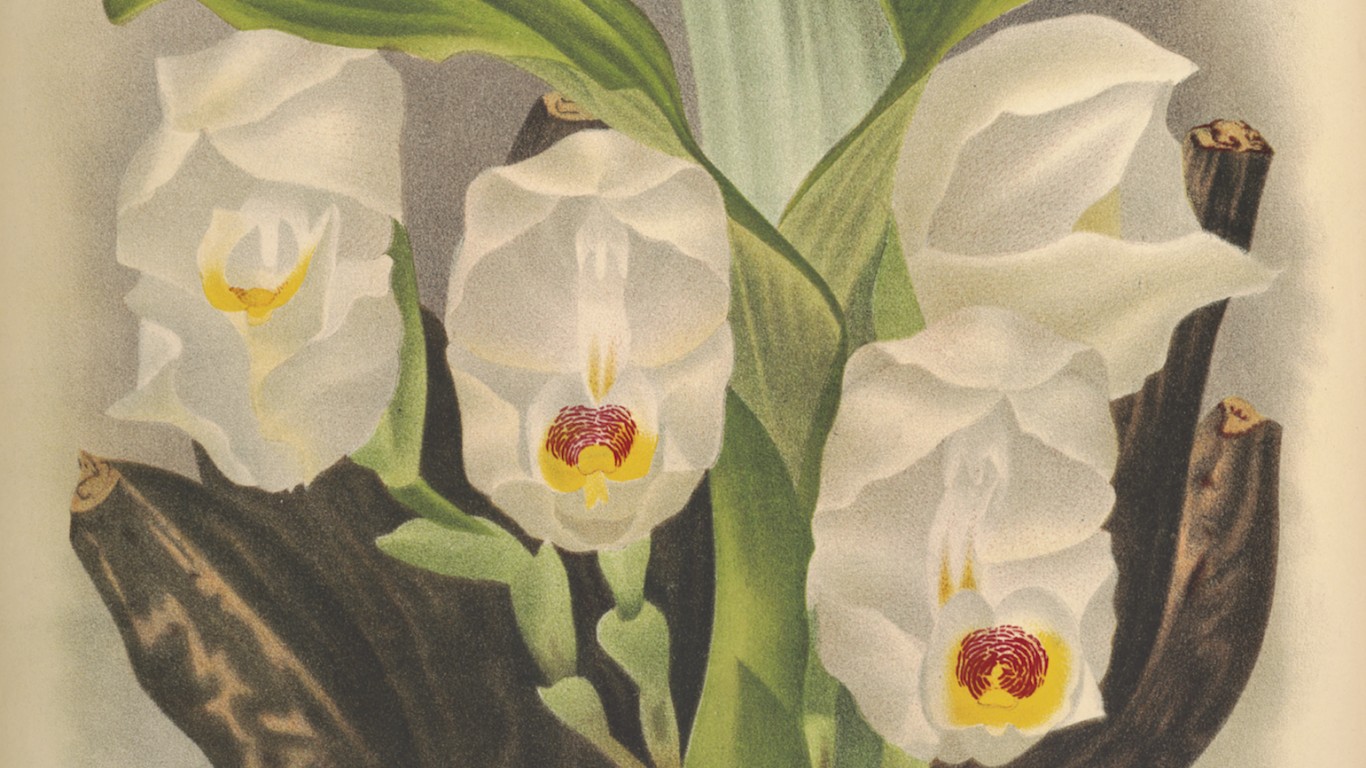
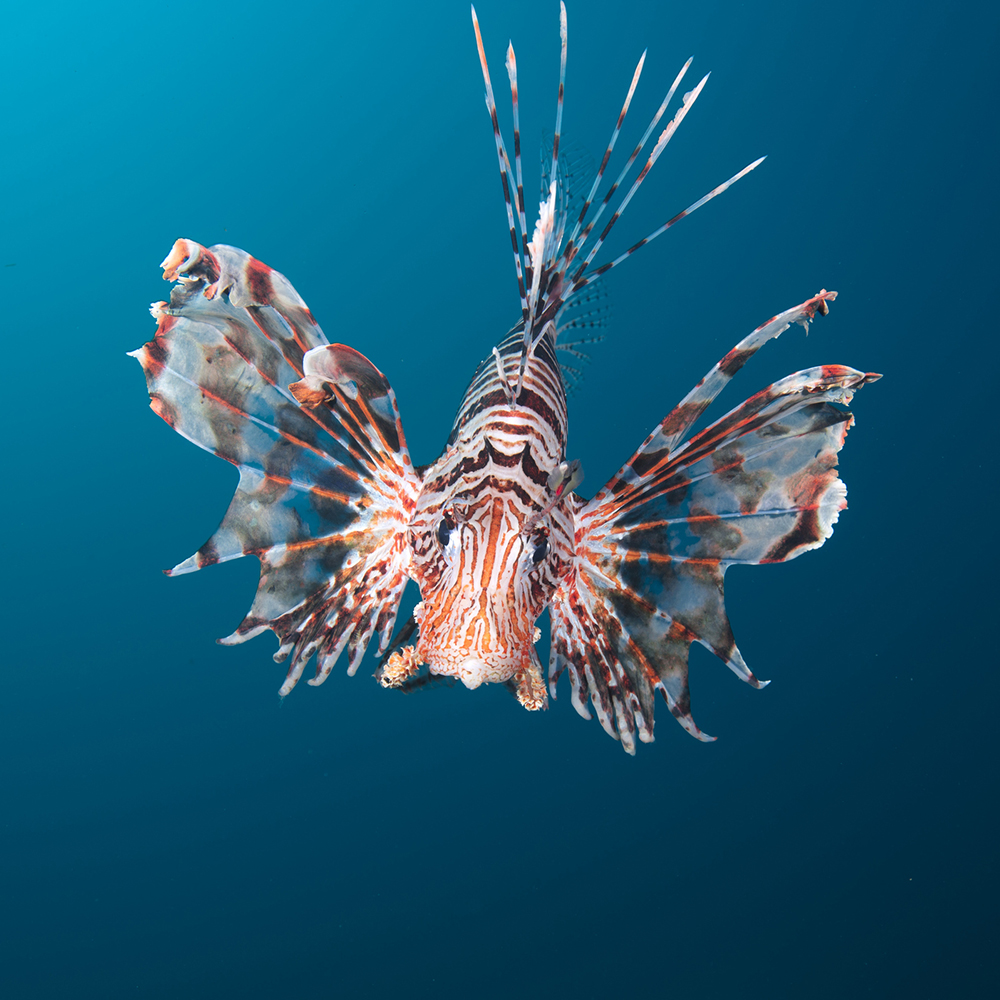 24/7 Wall St.
24/7 Wall St.